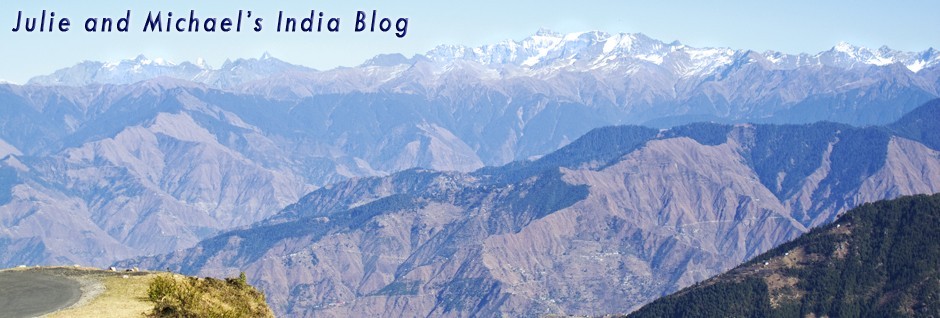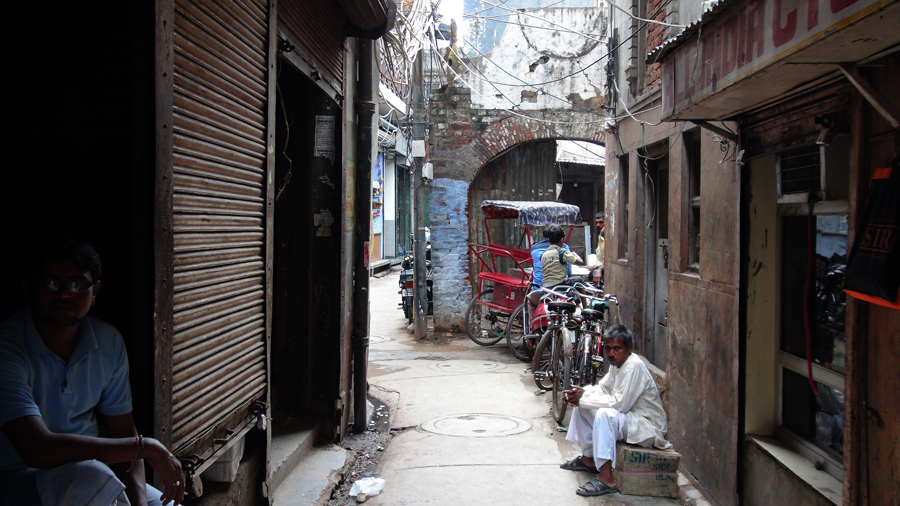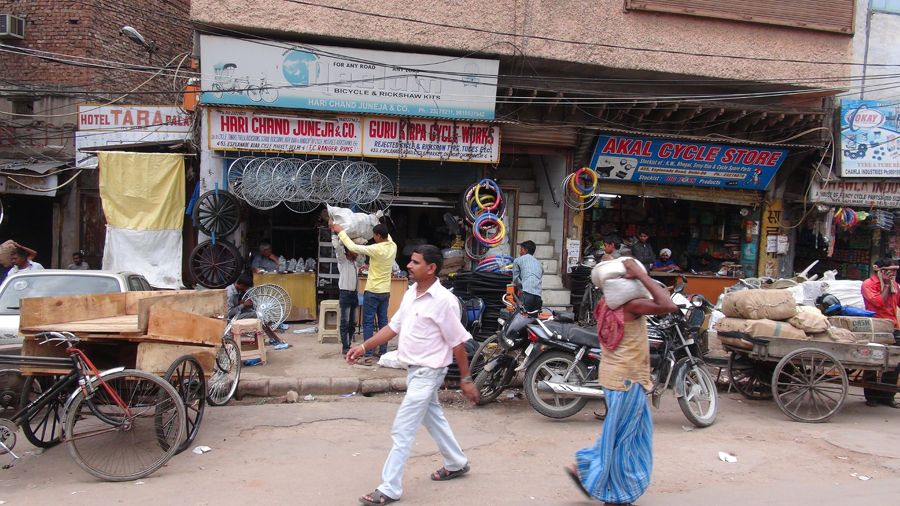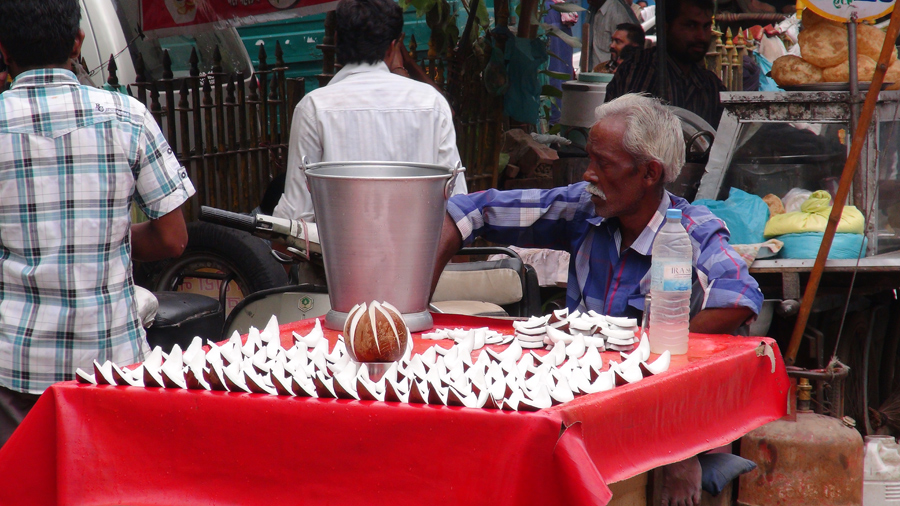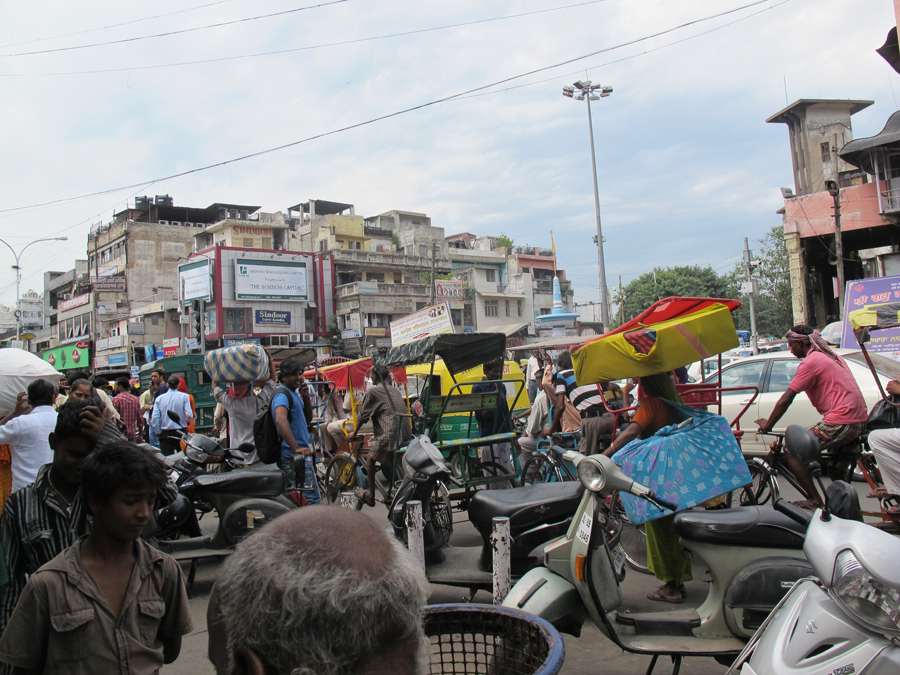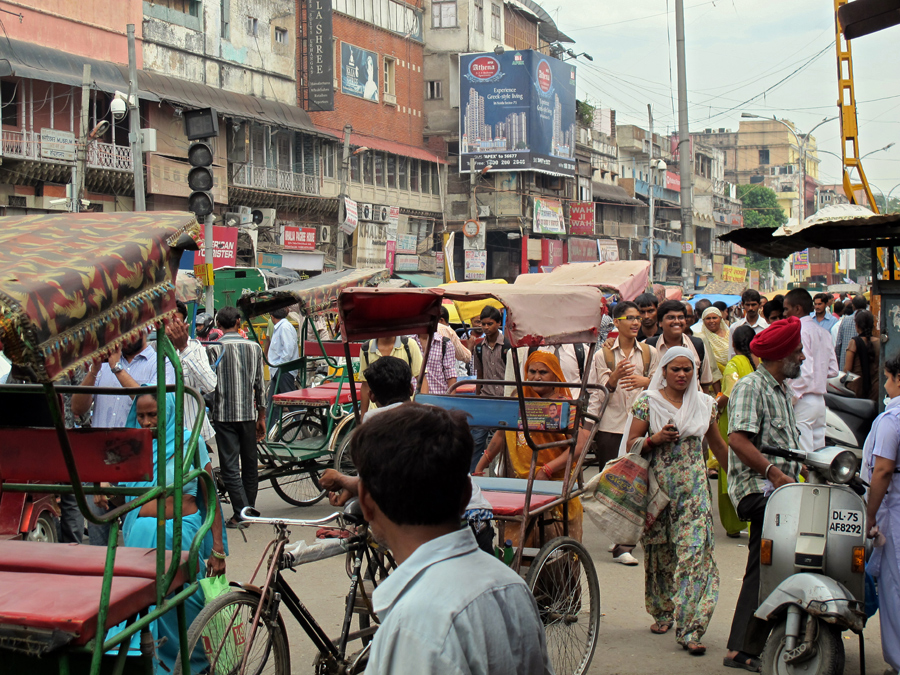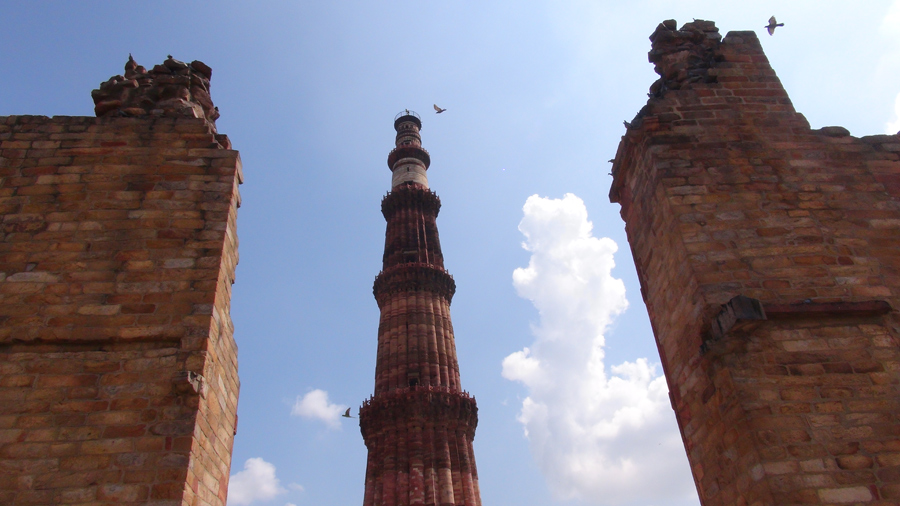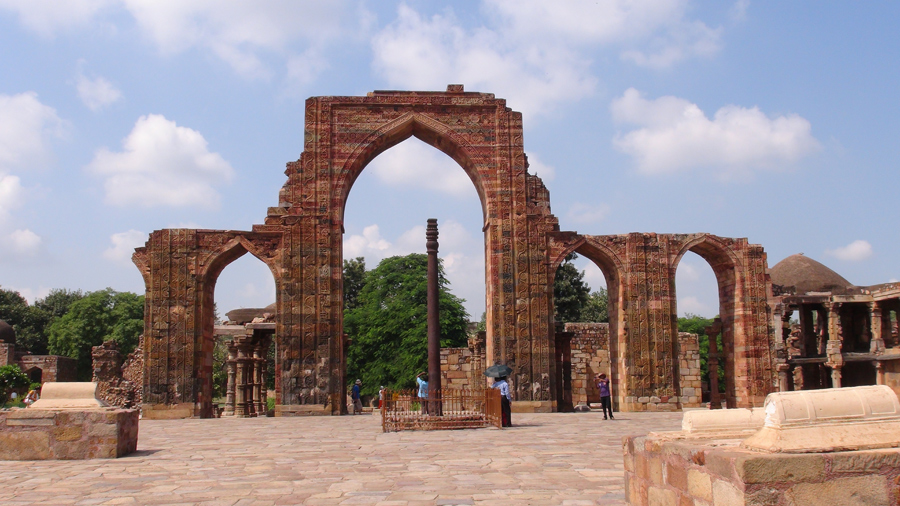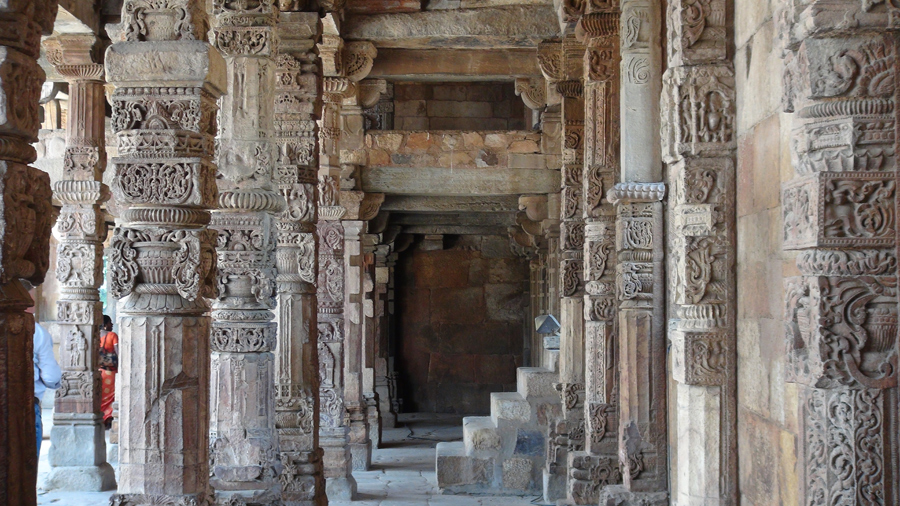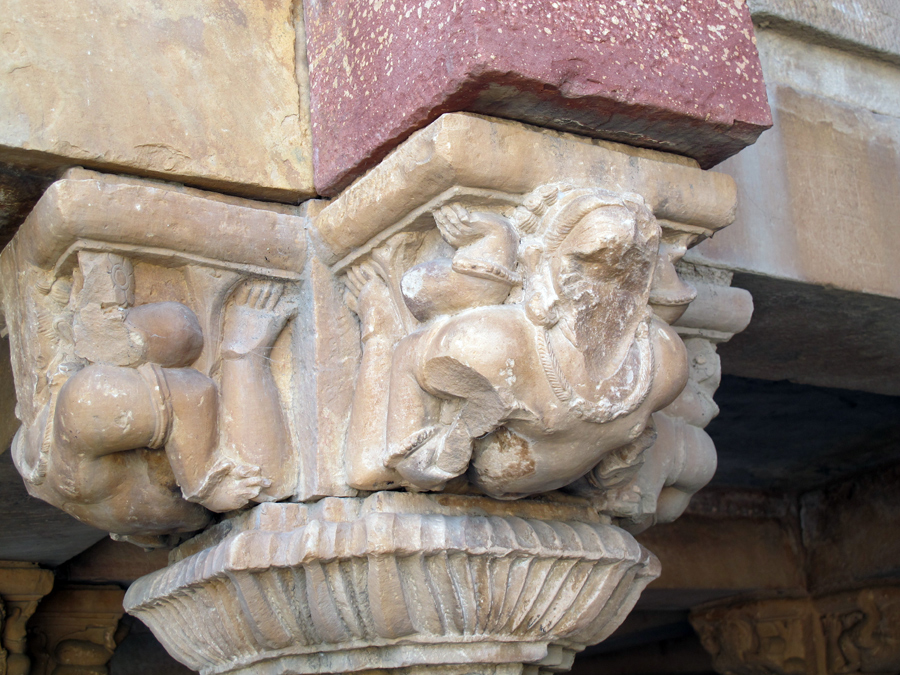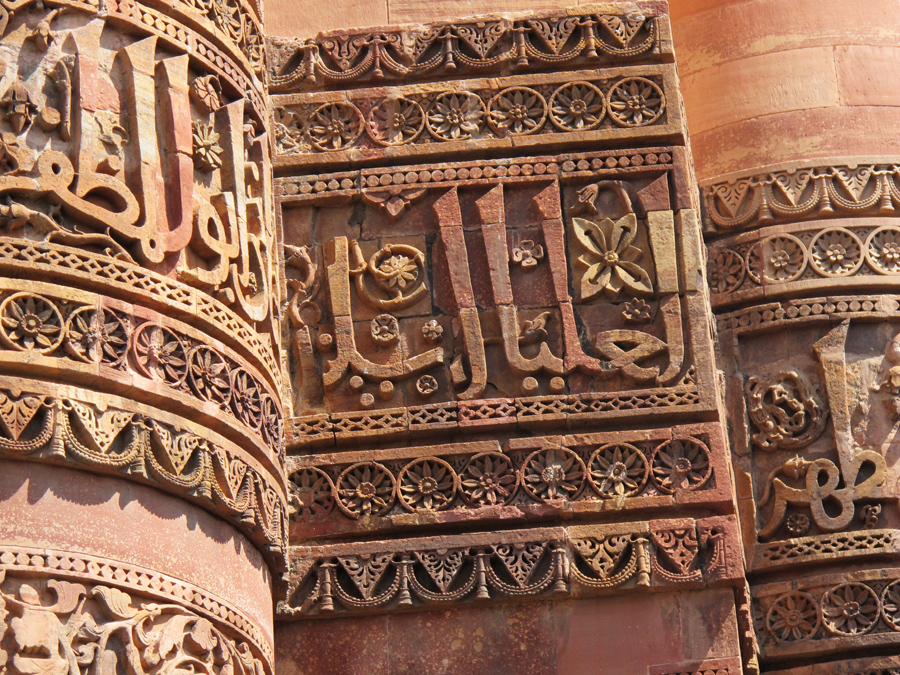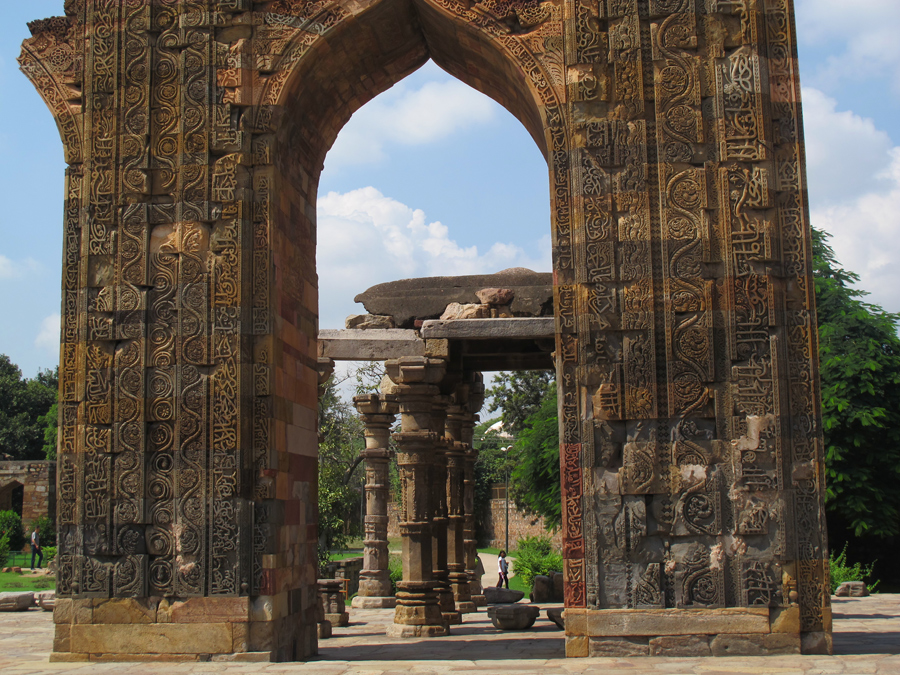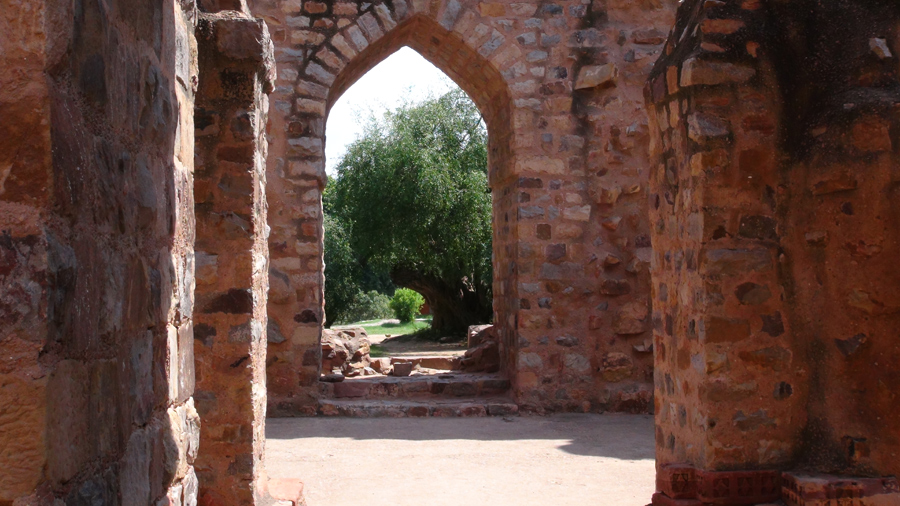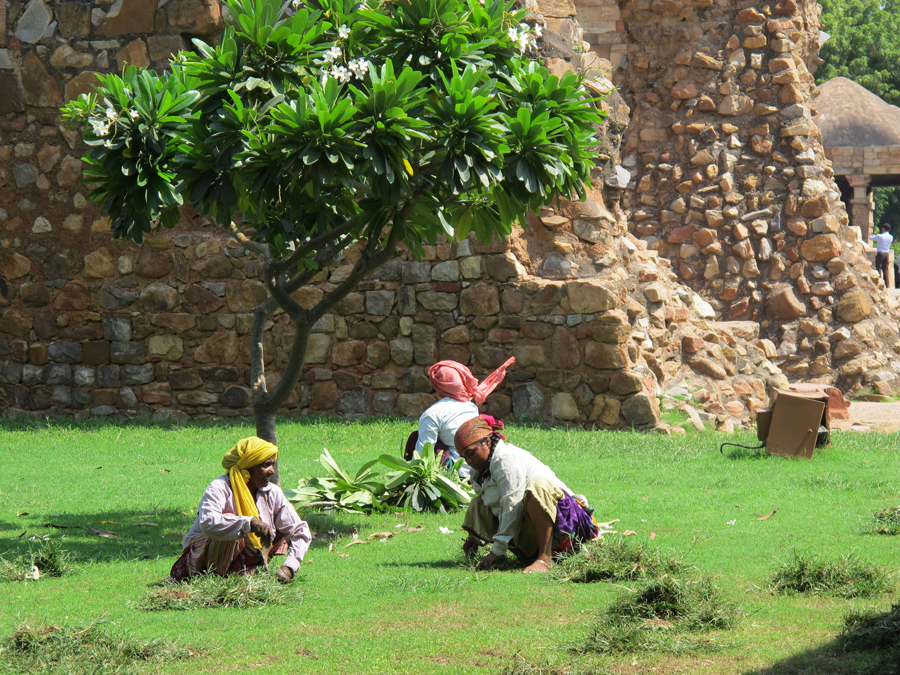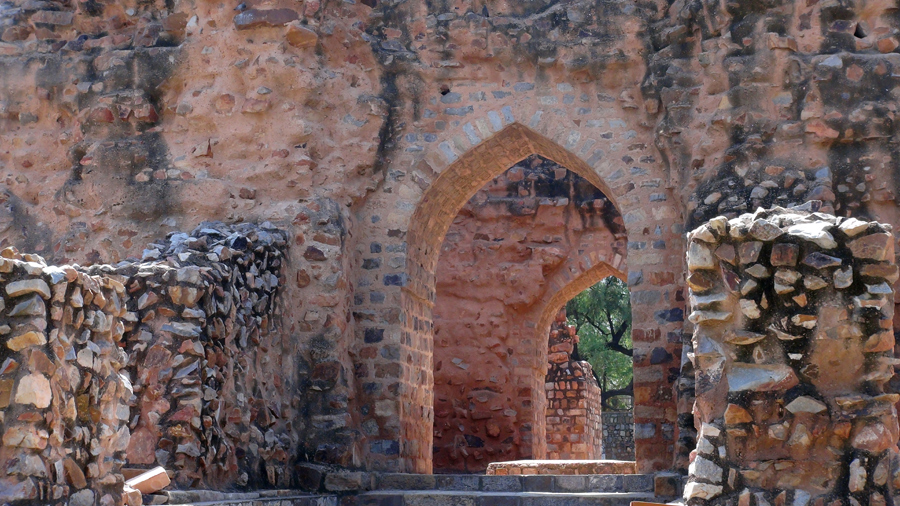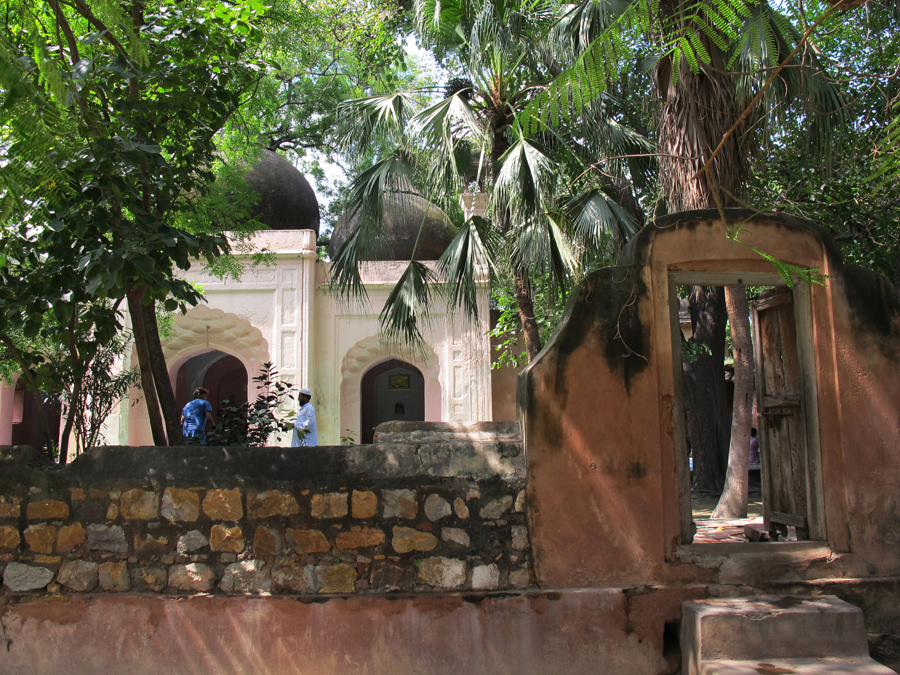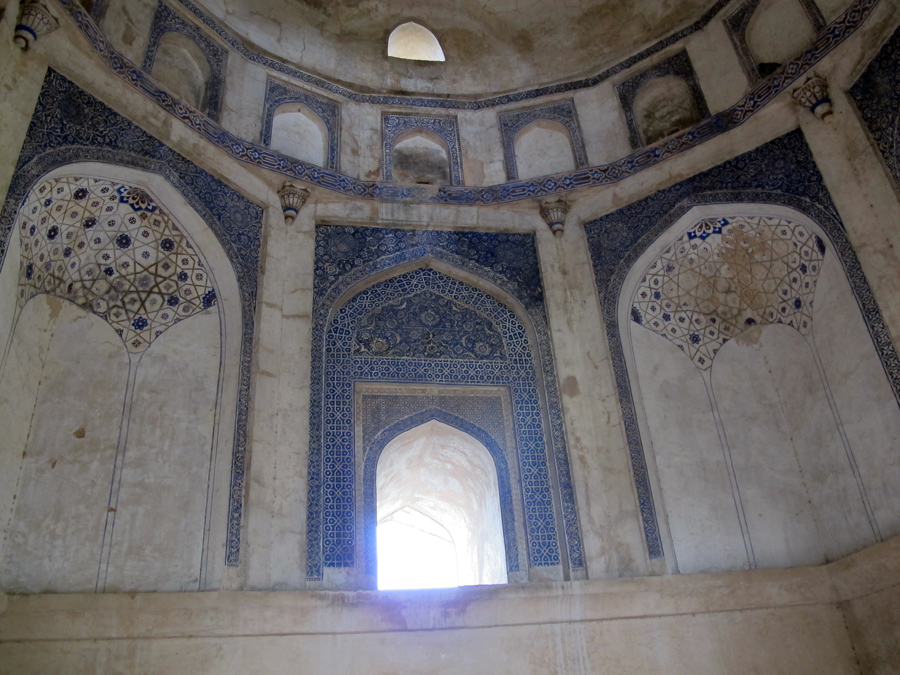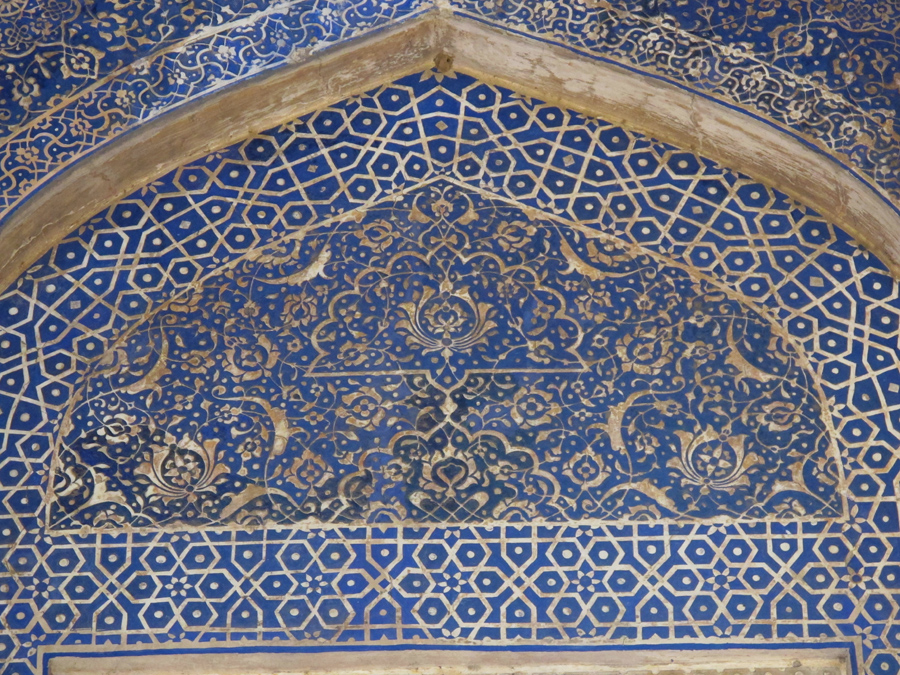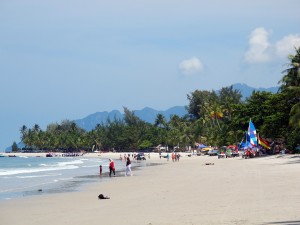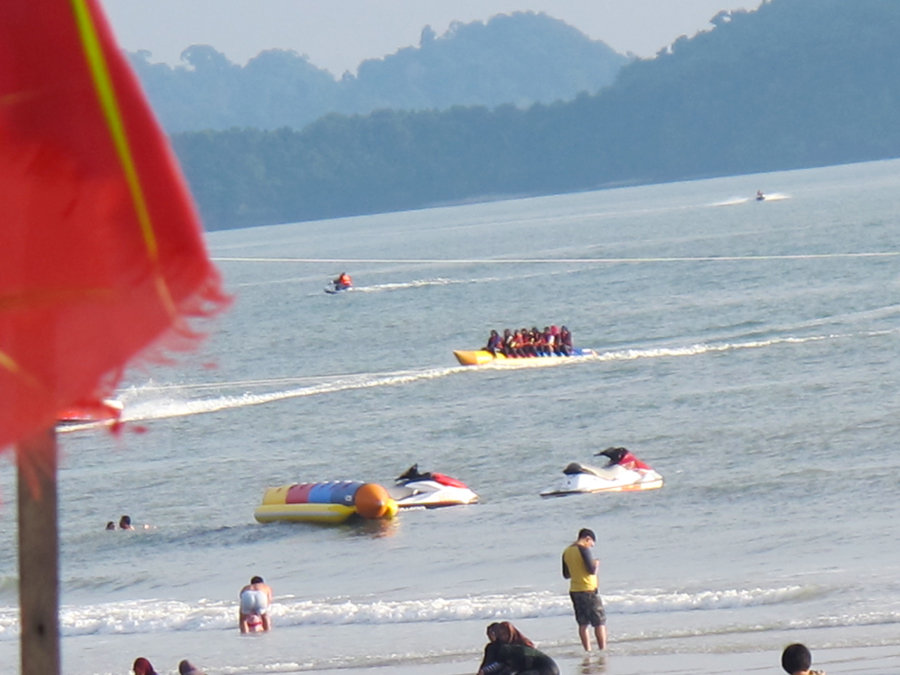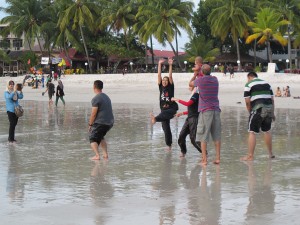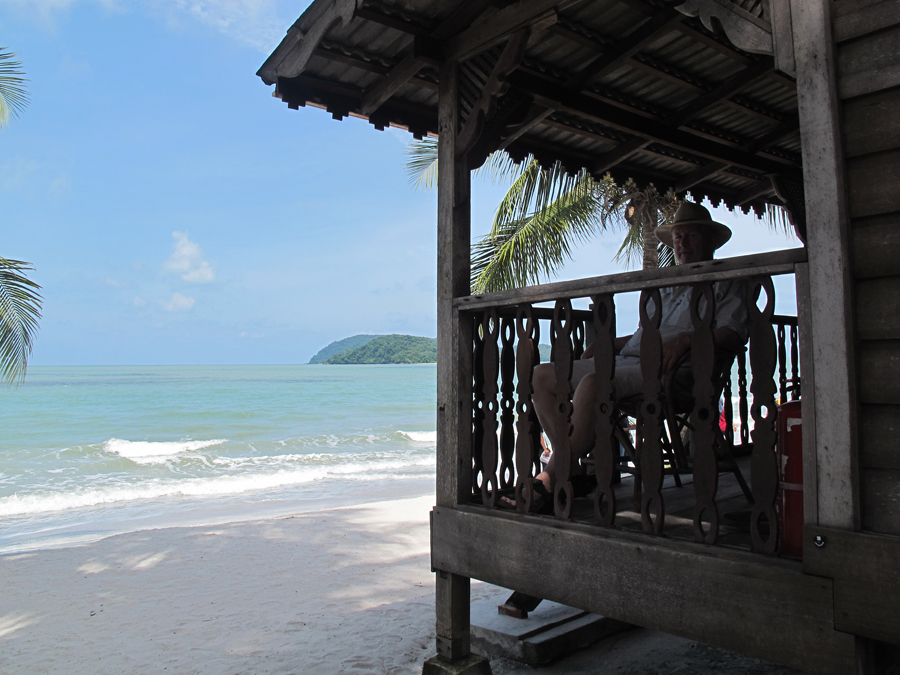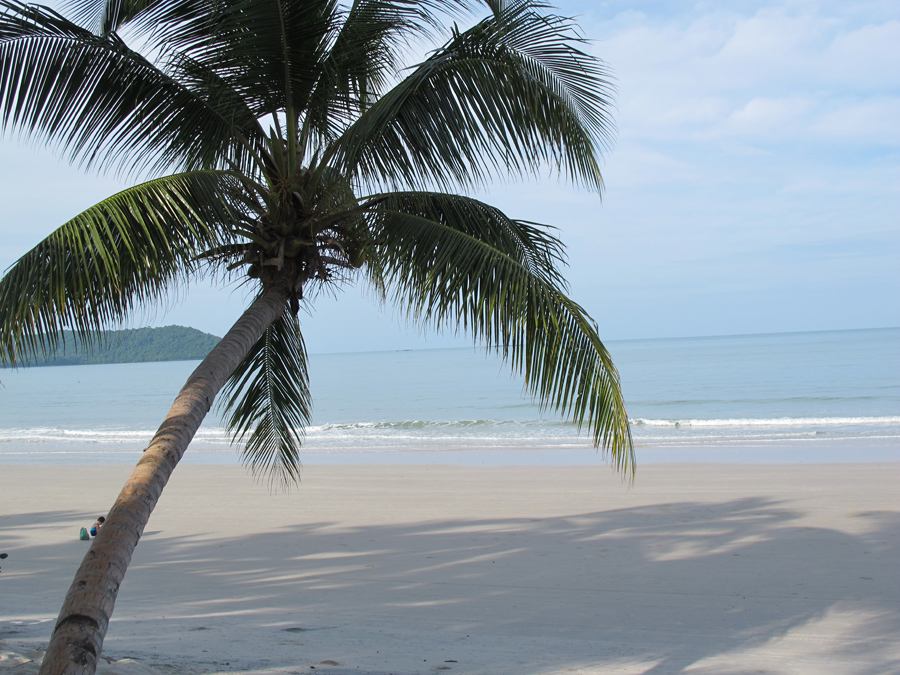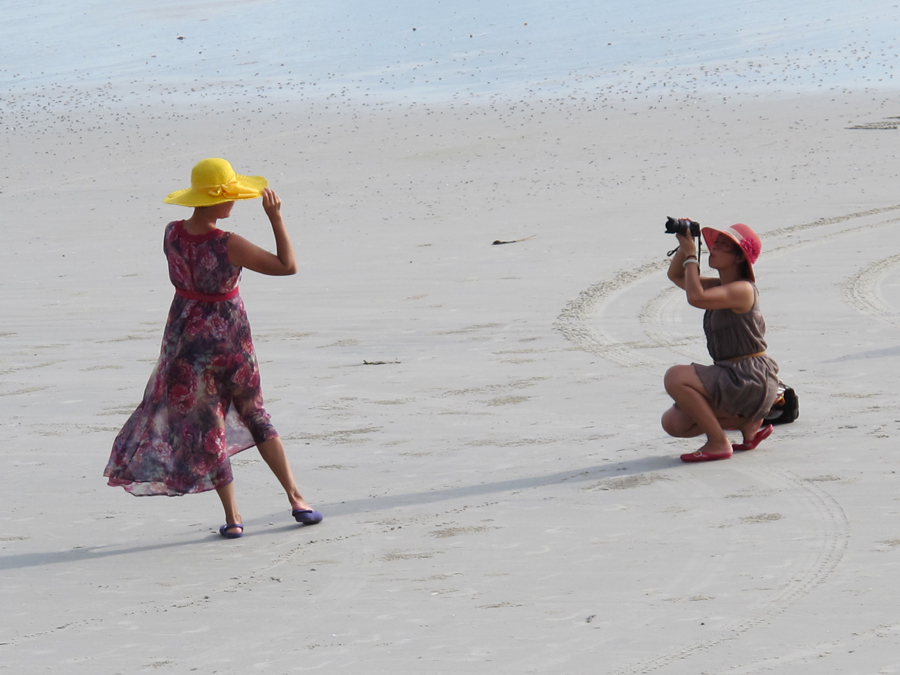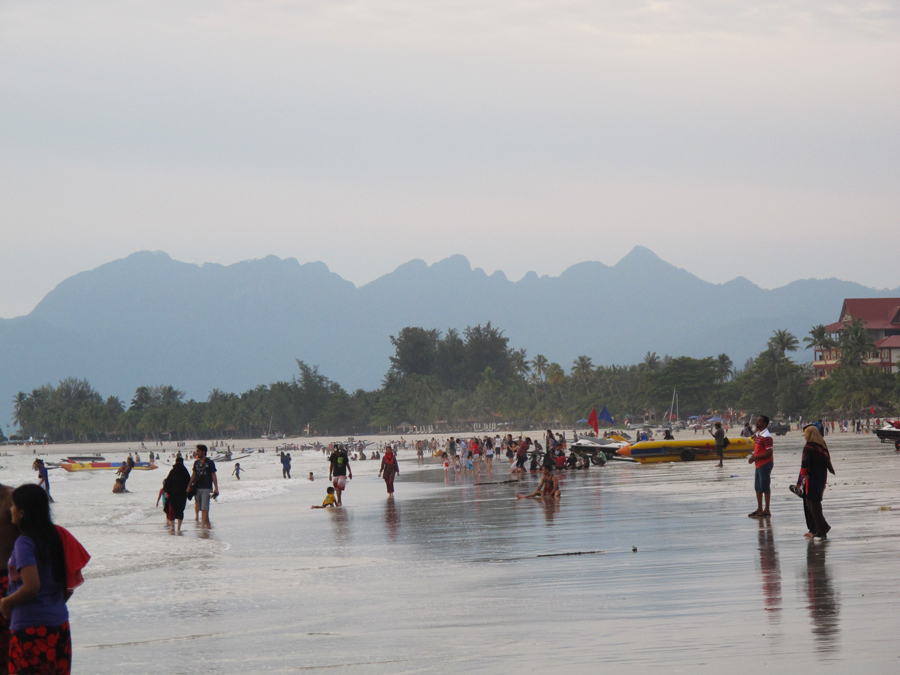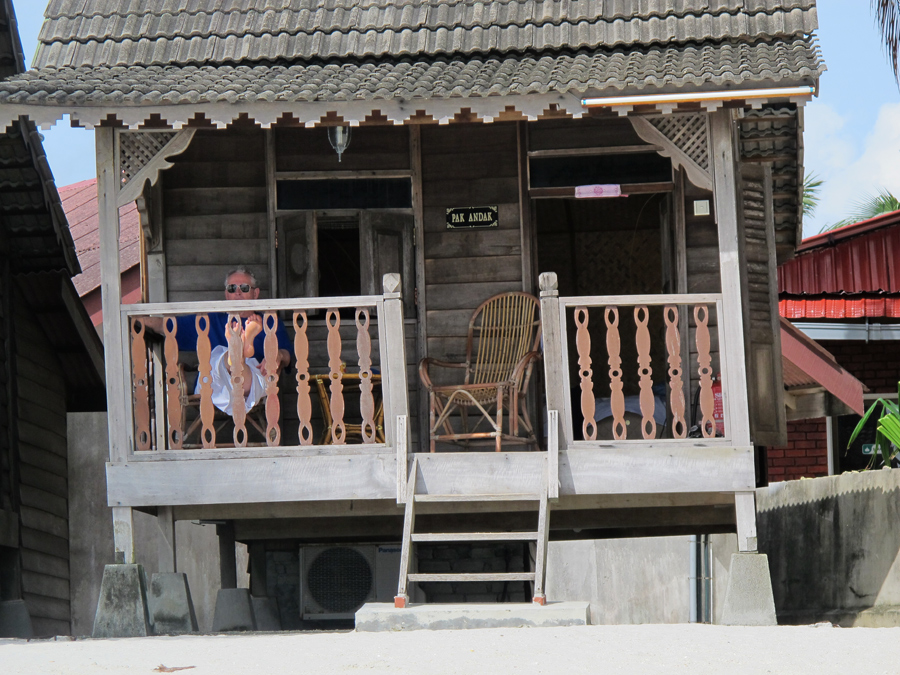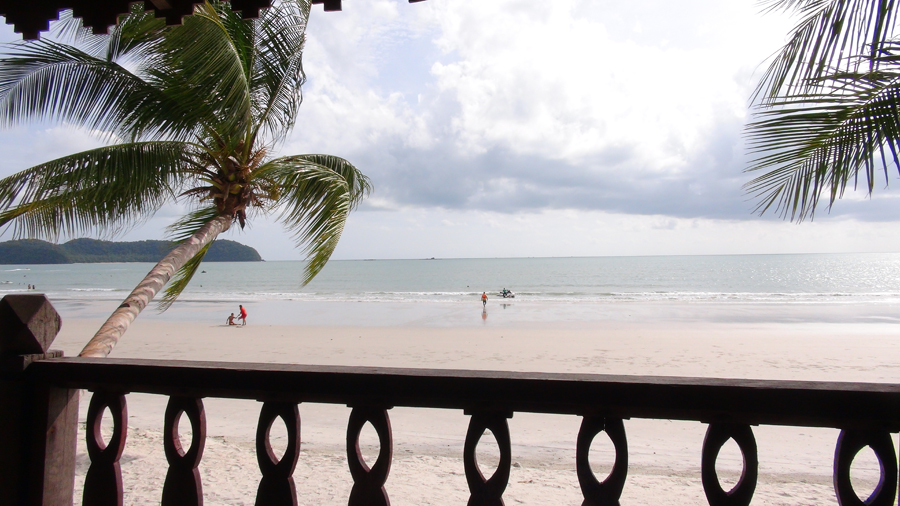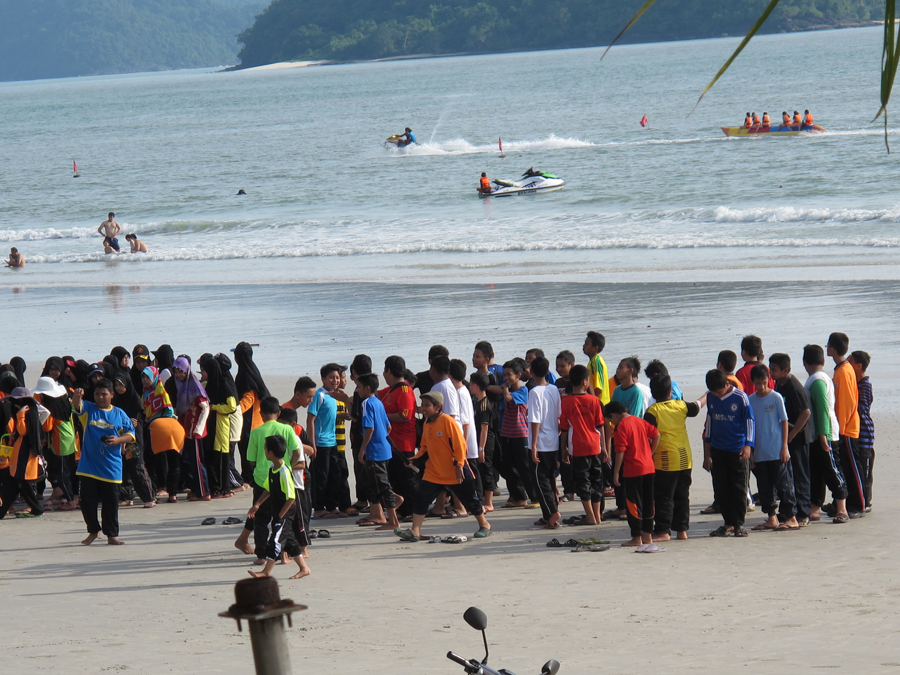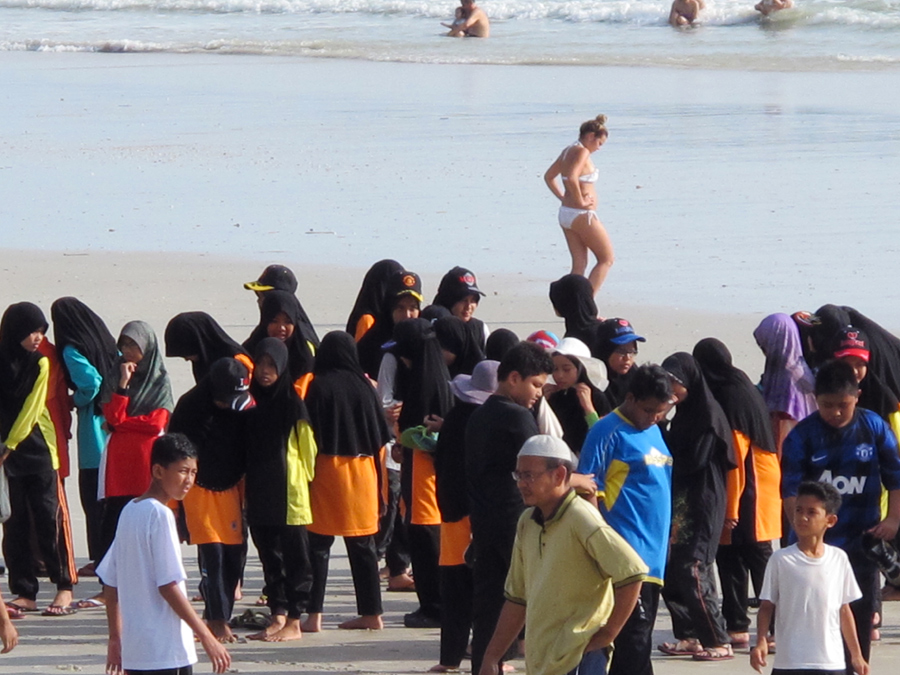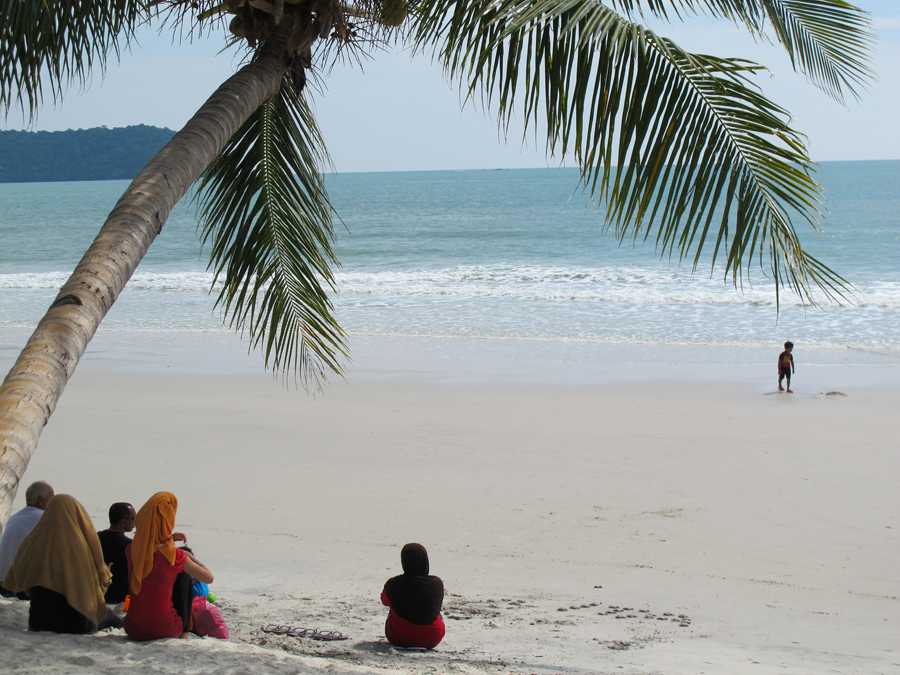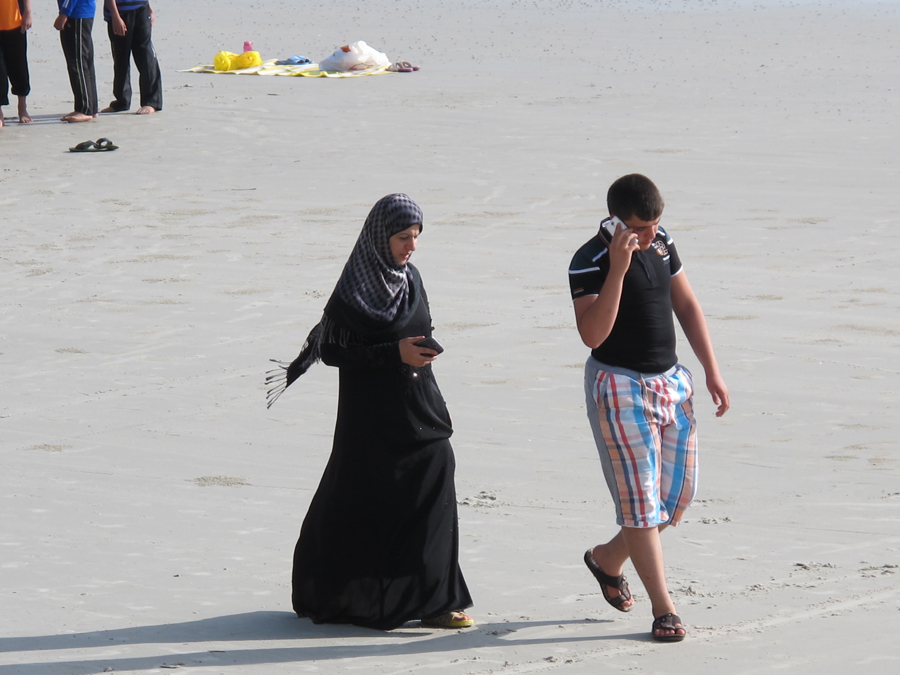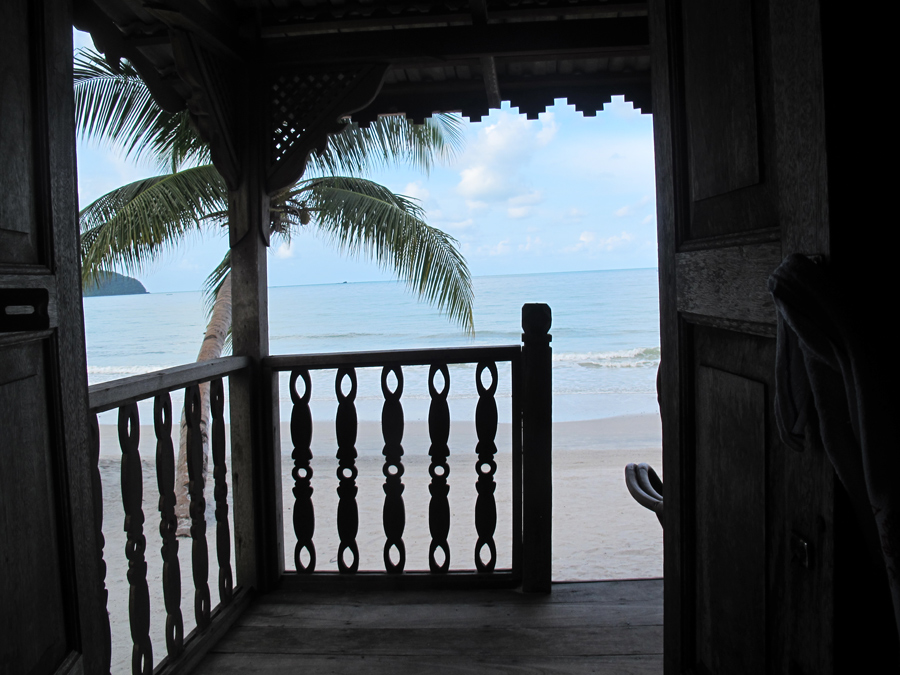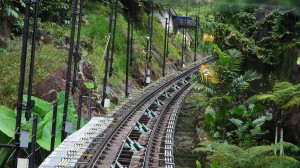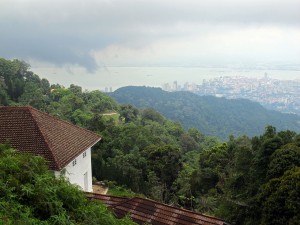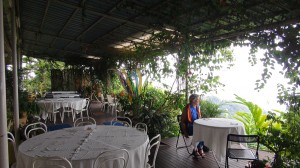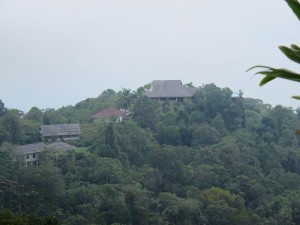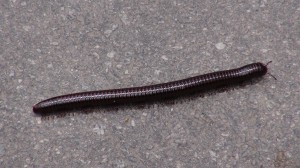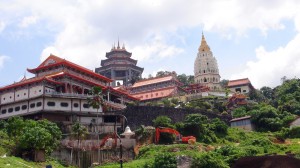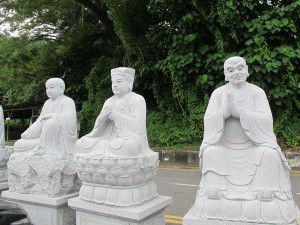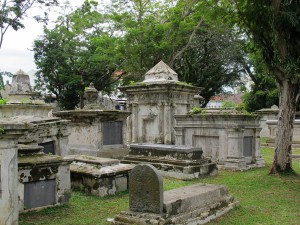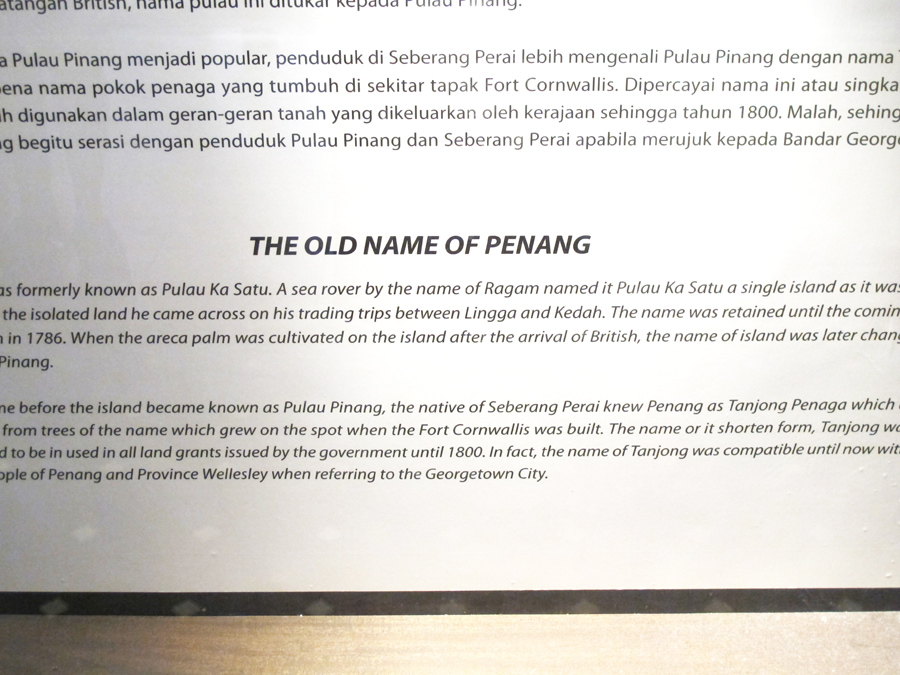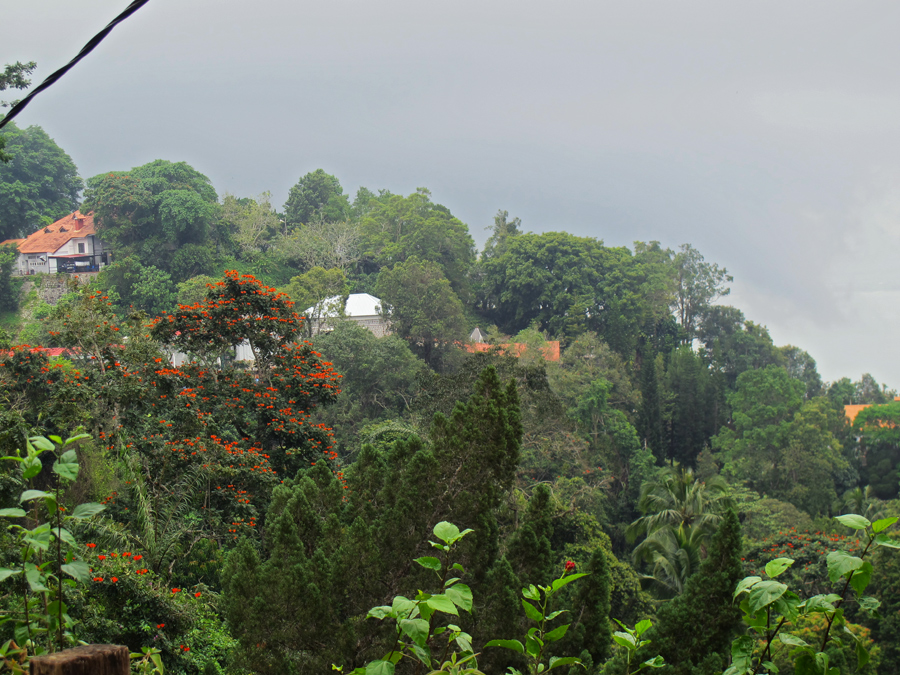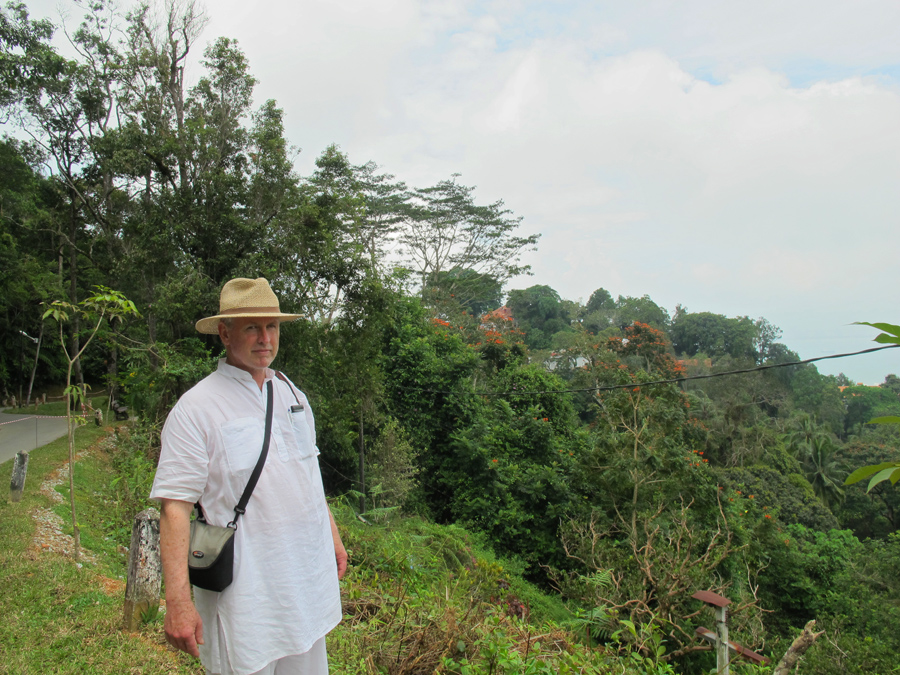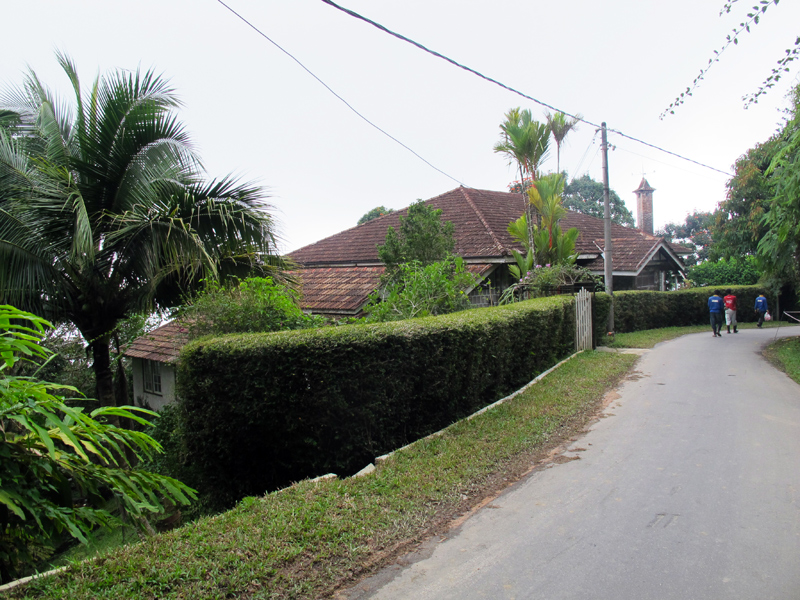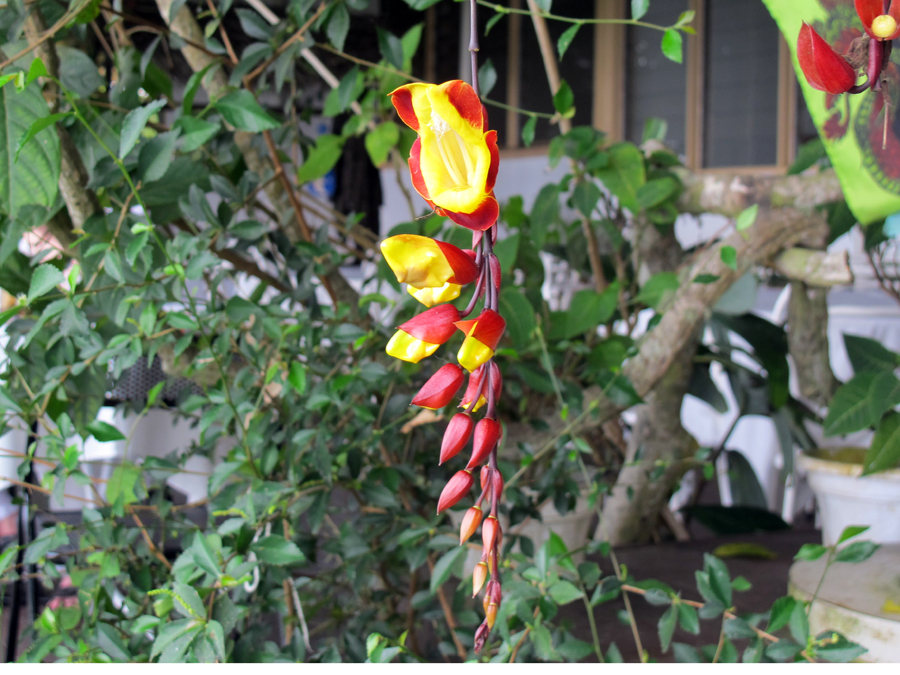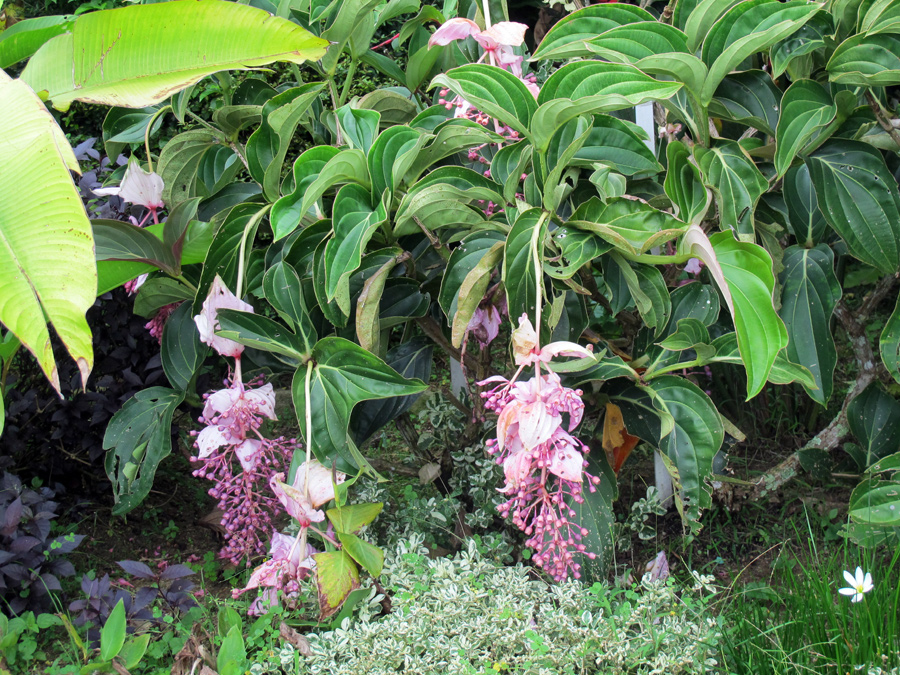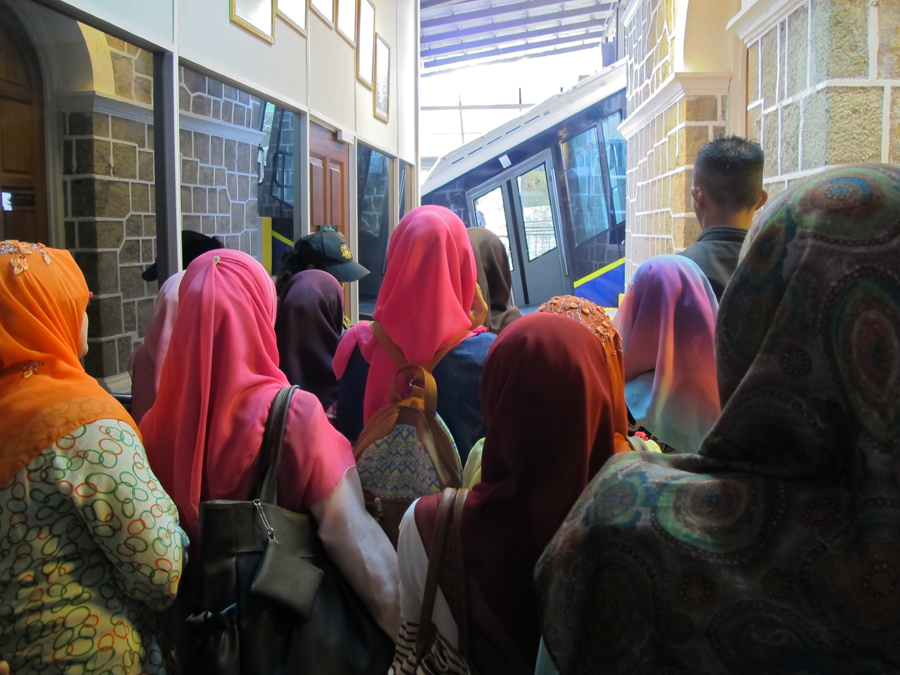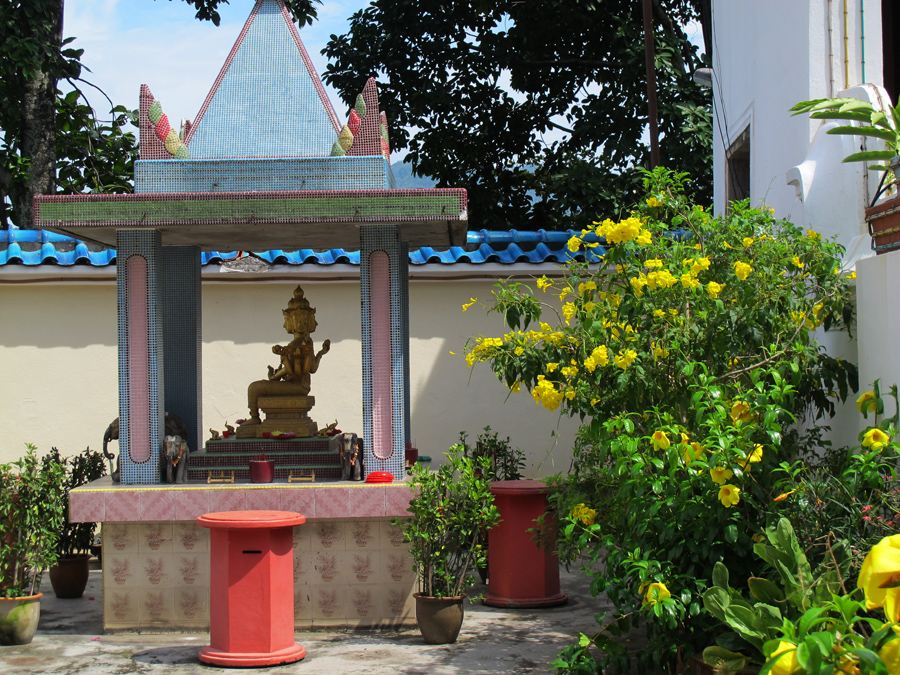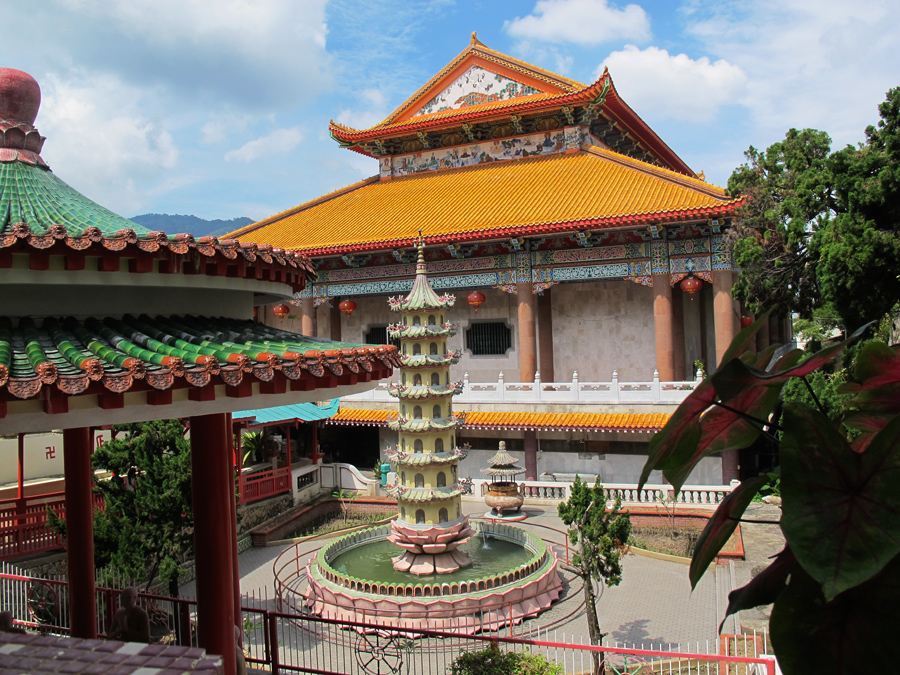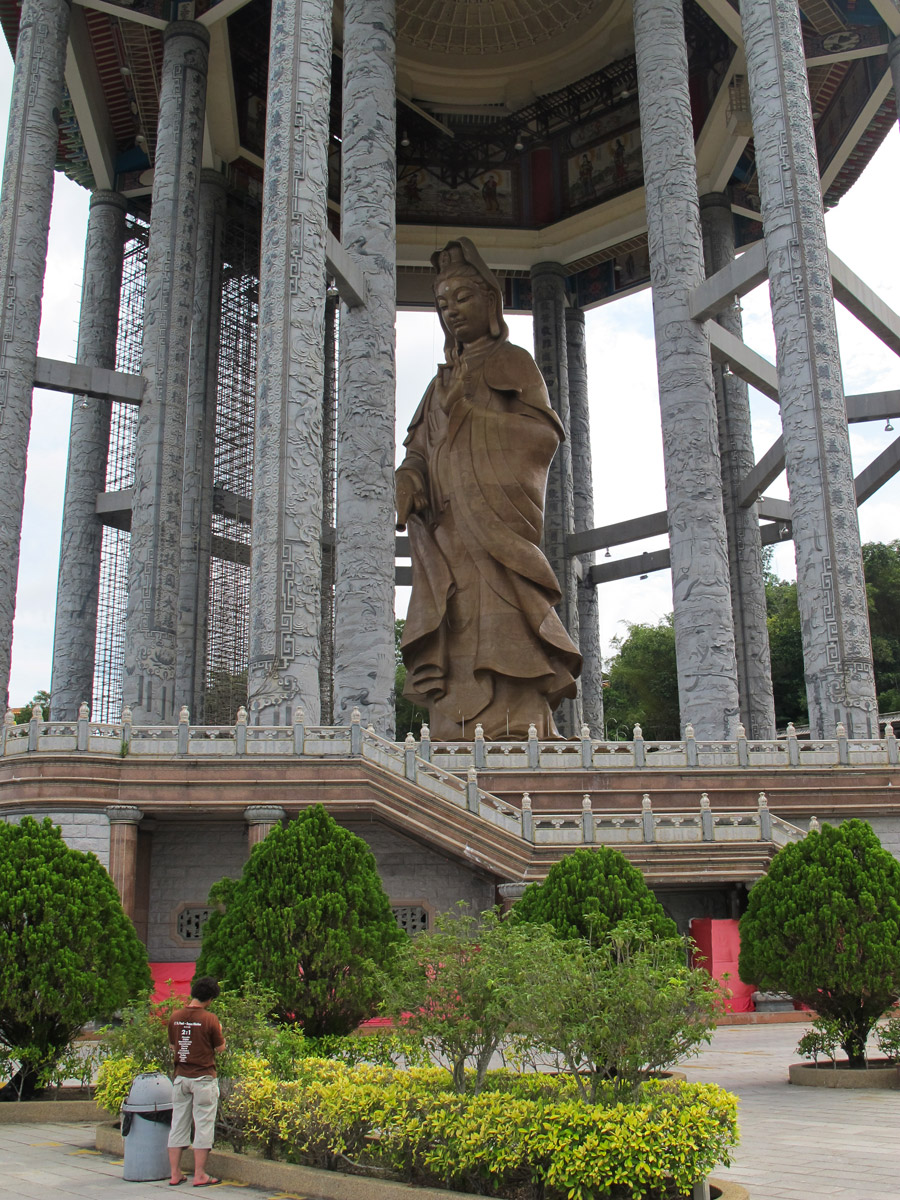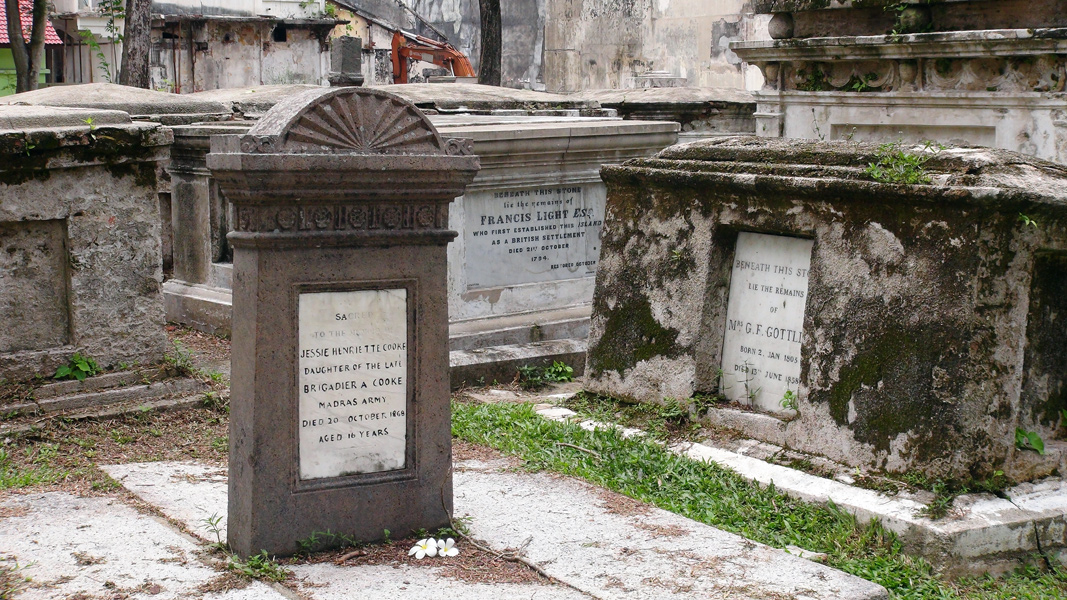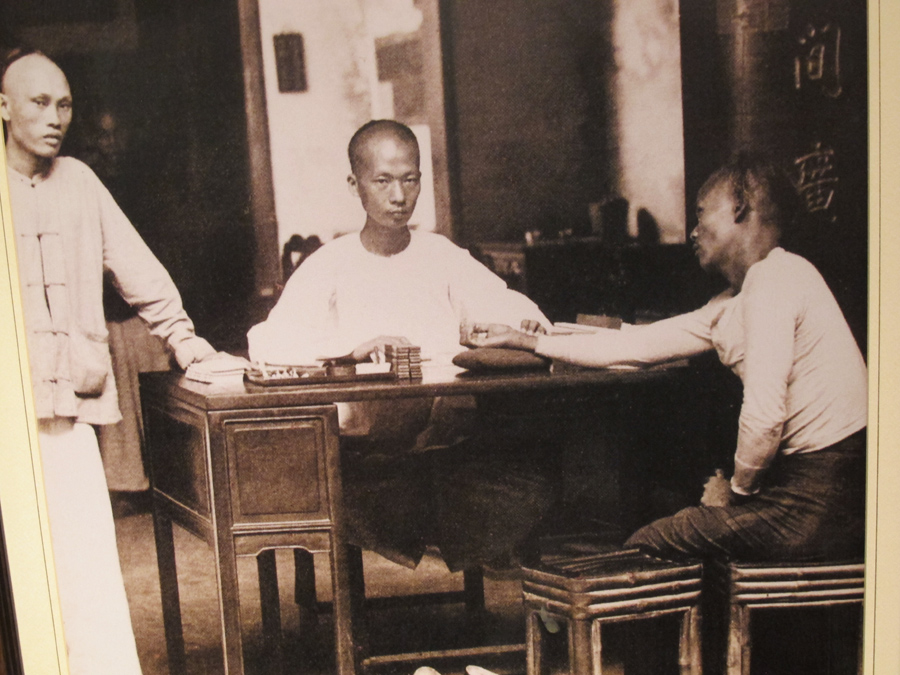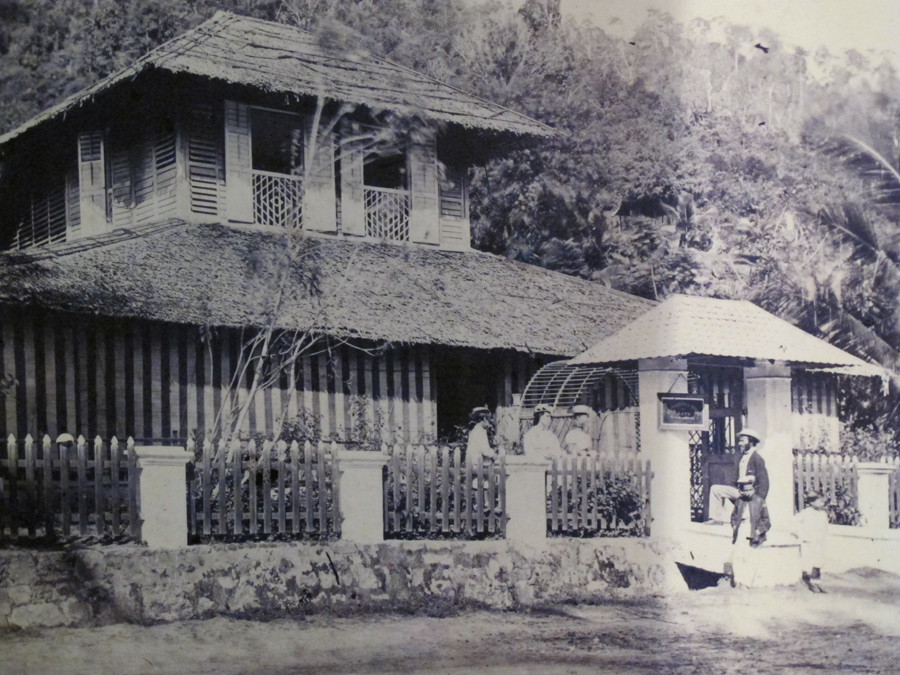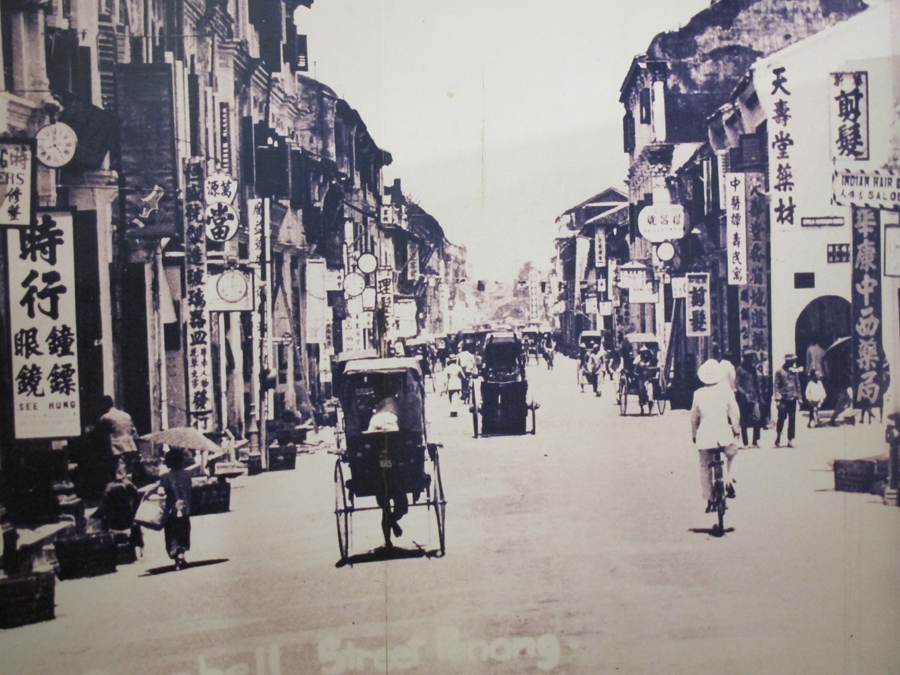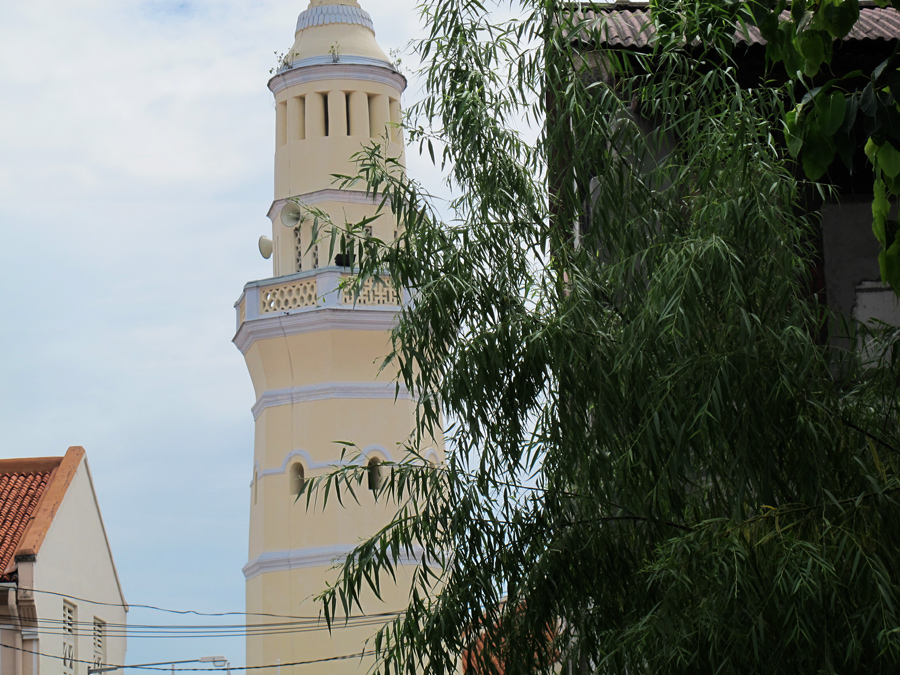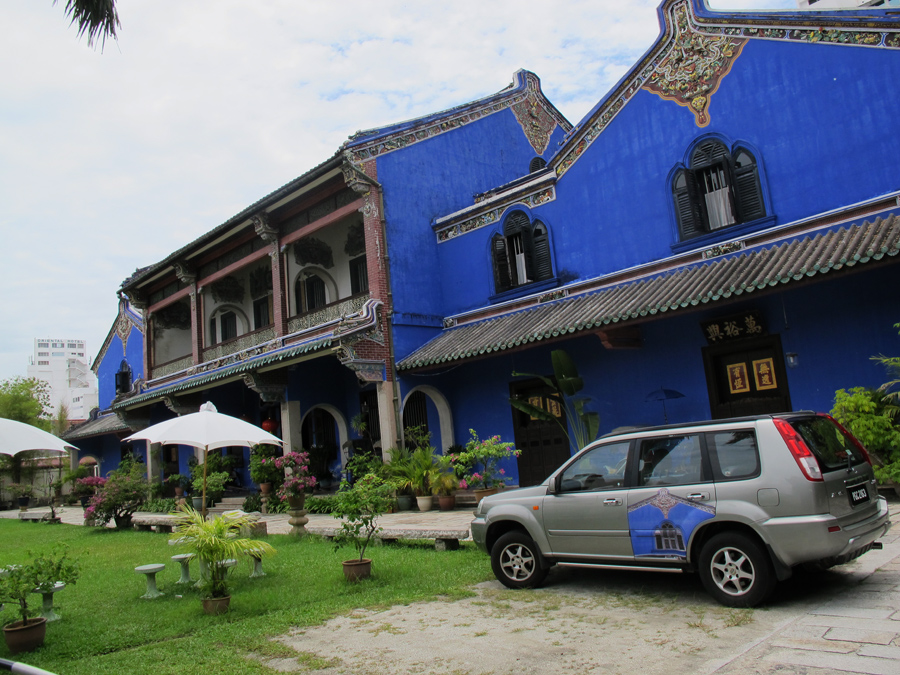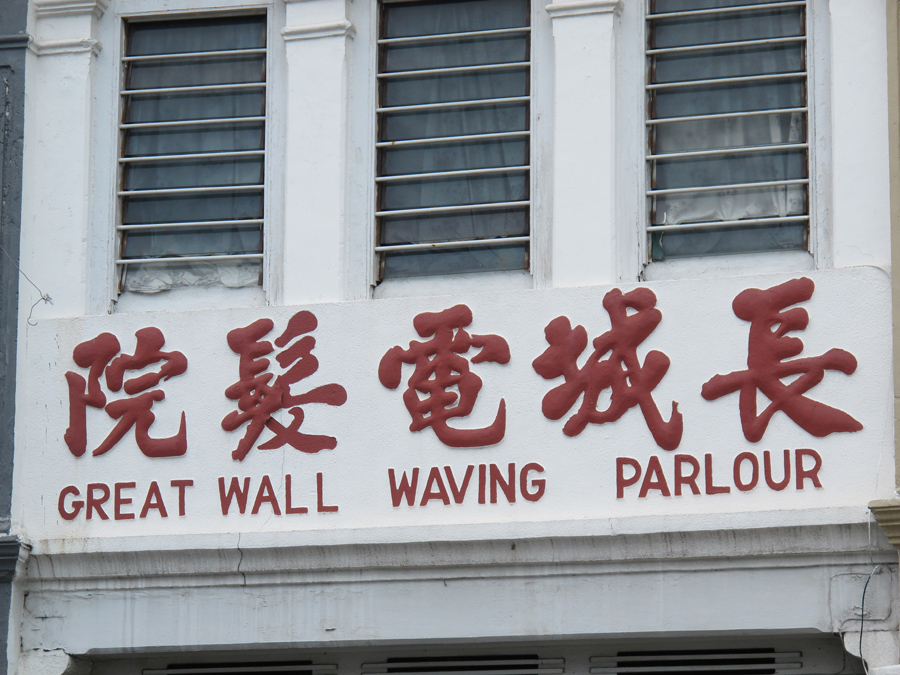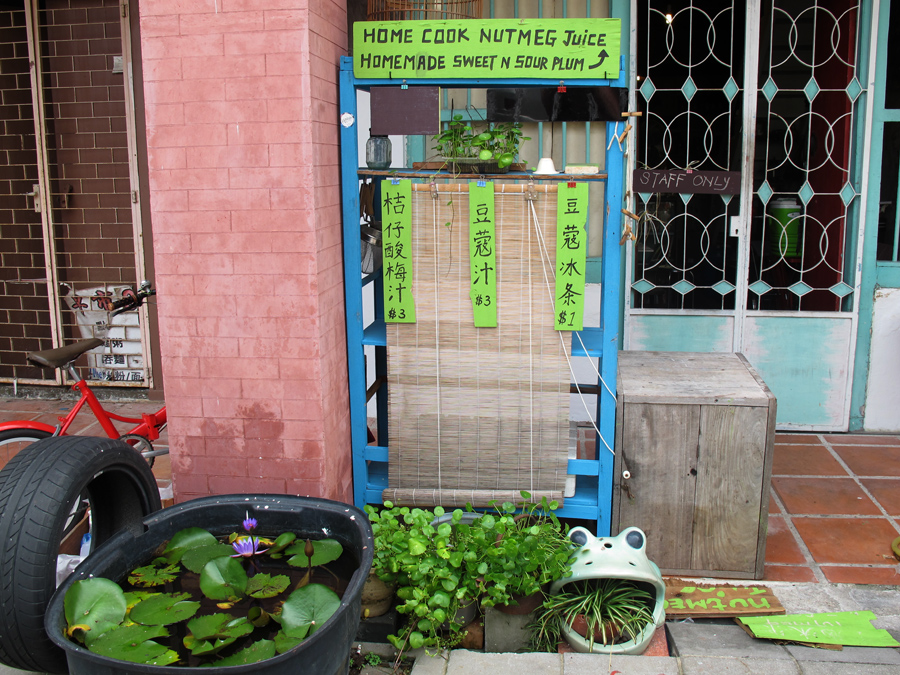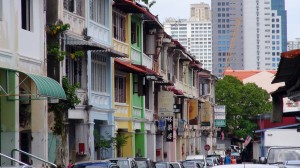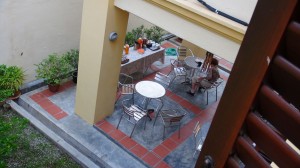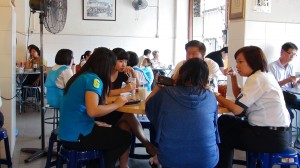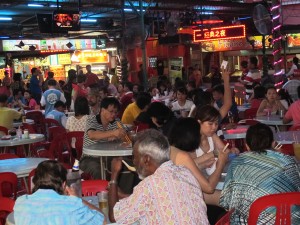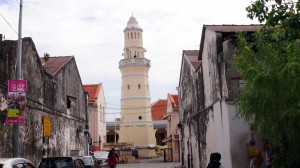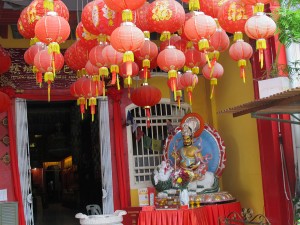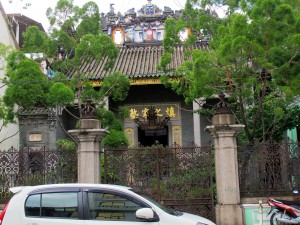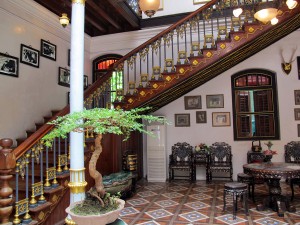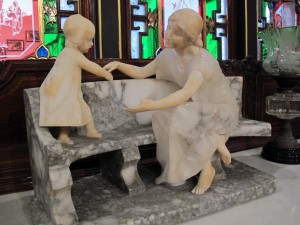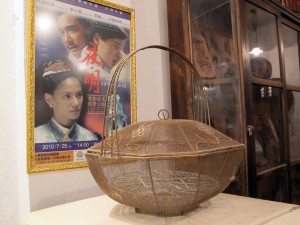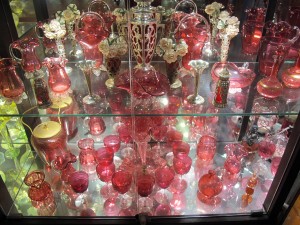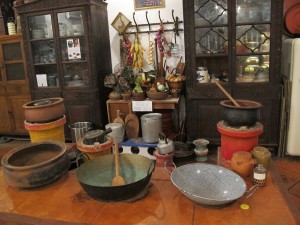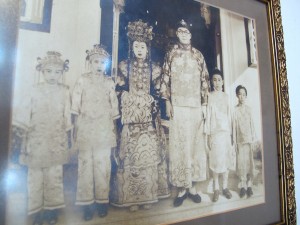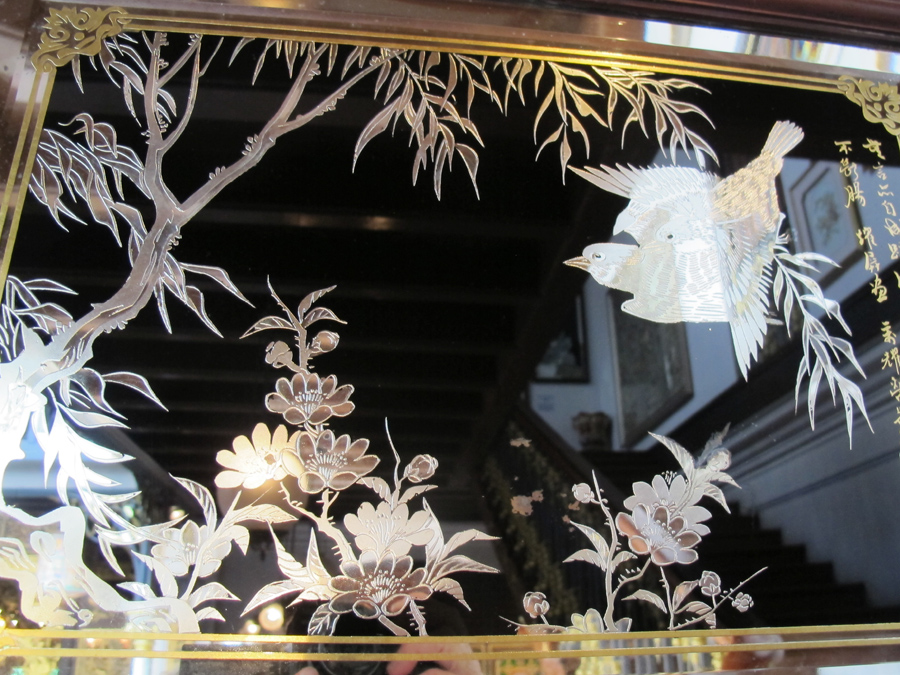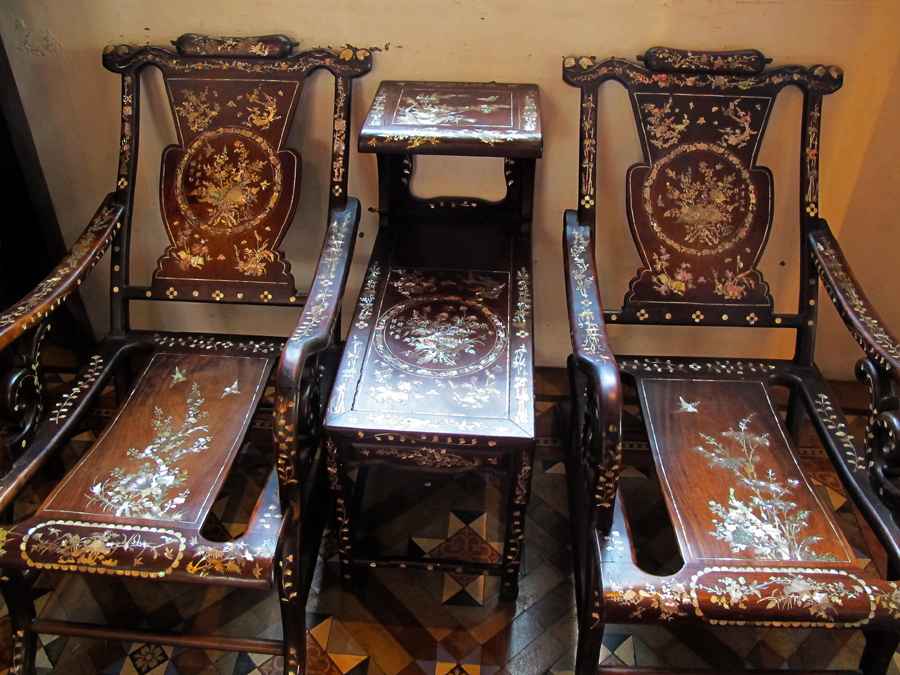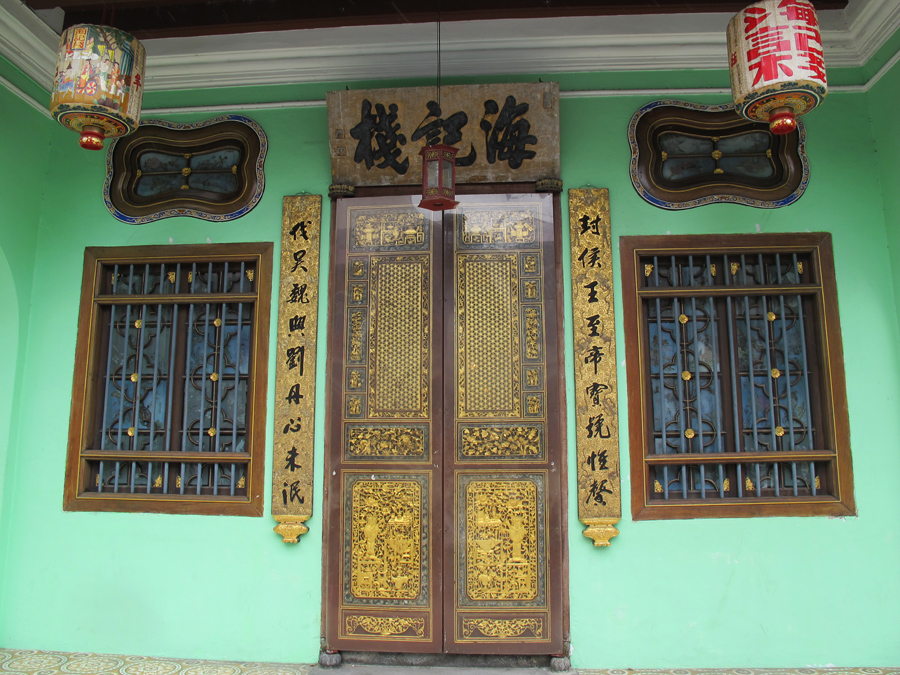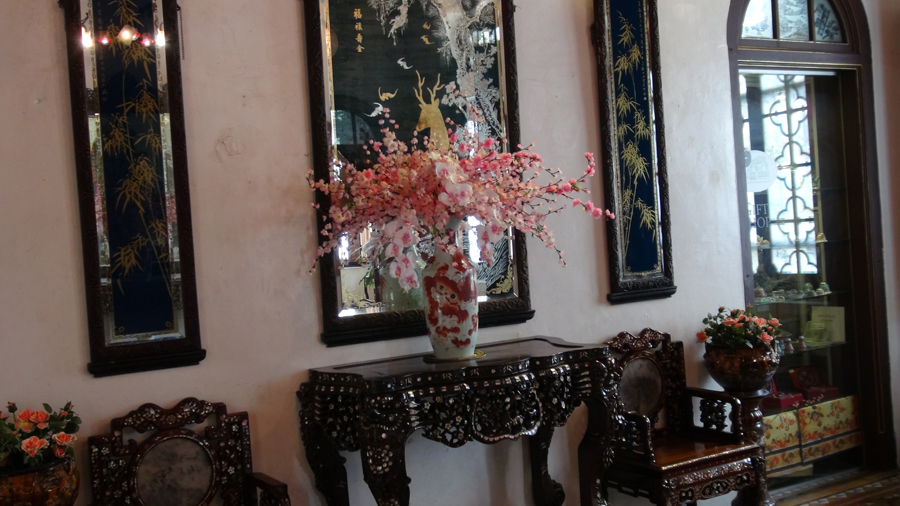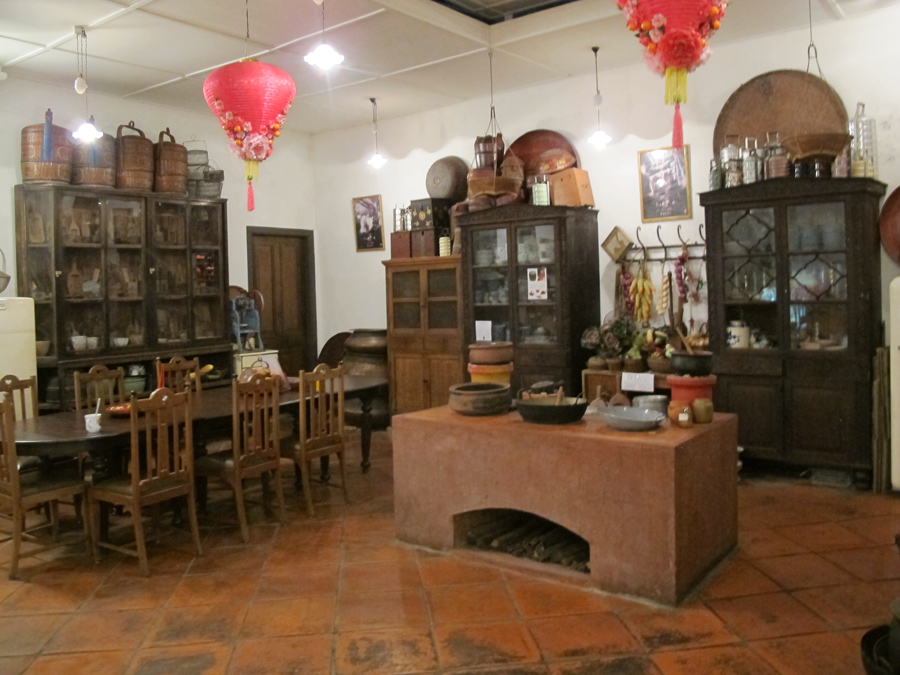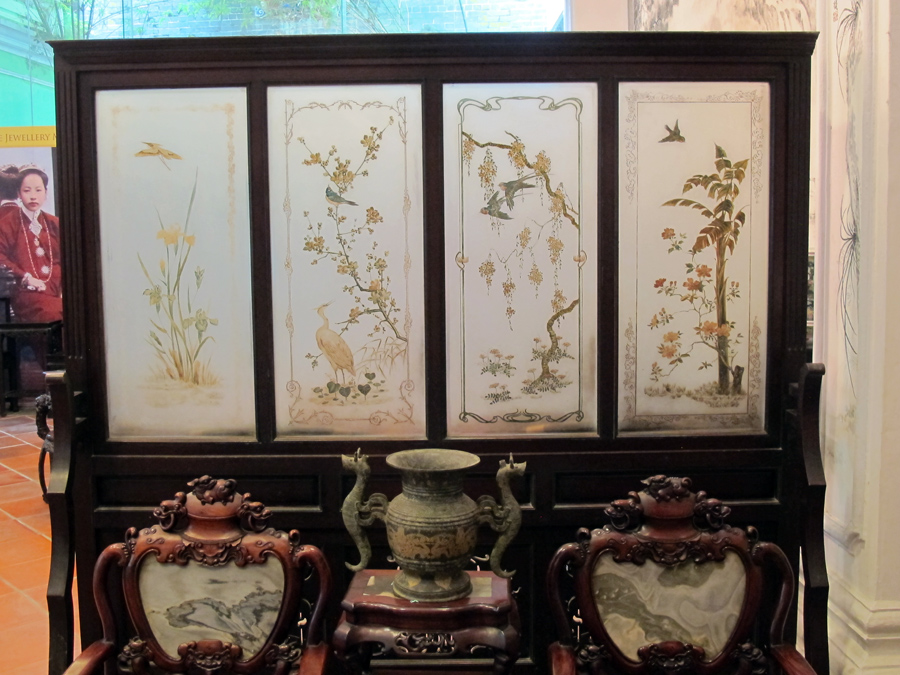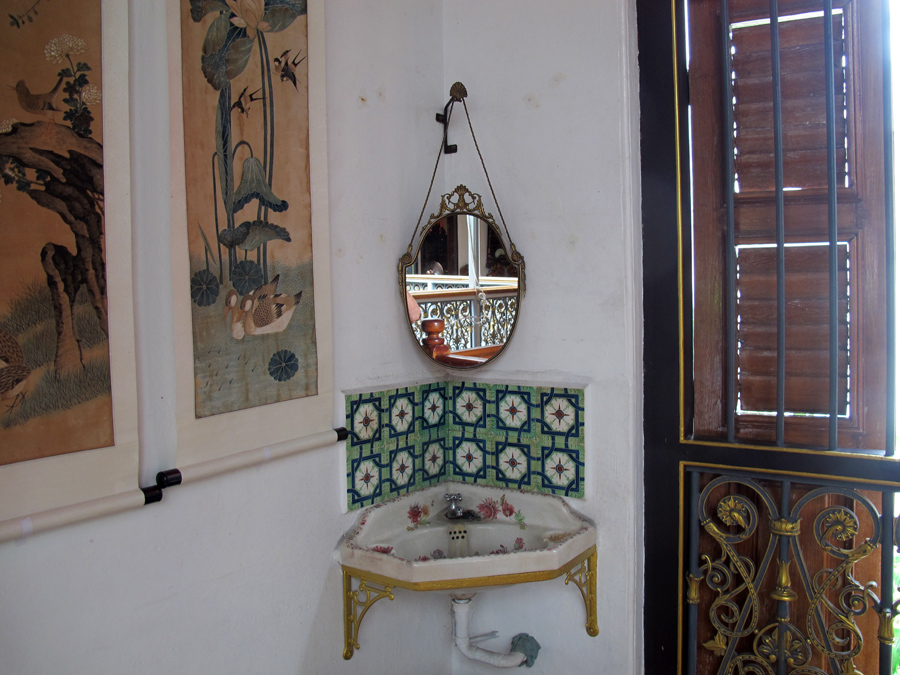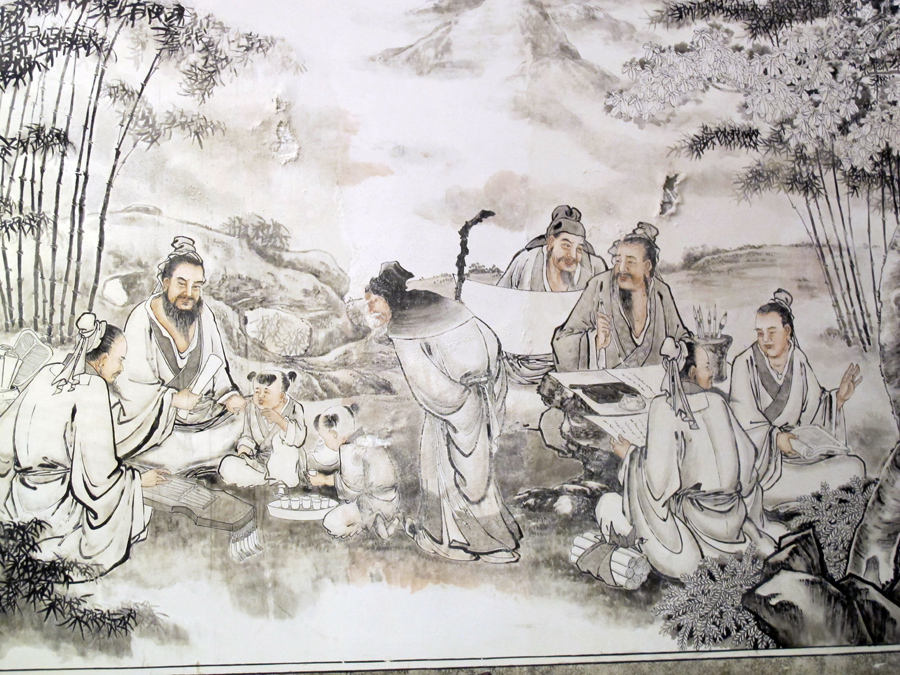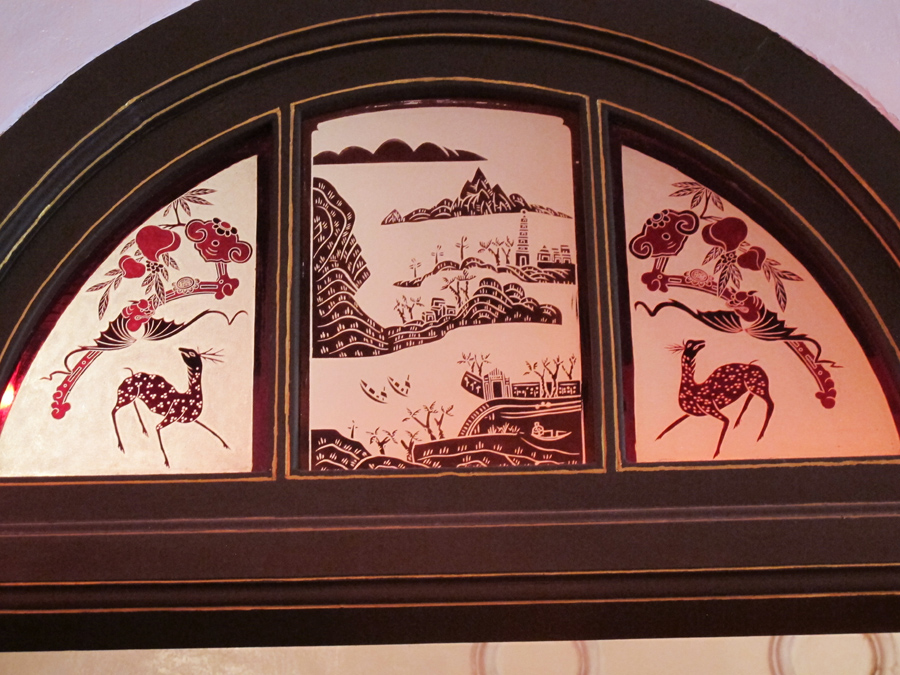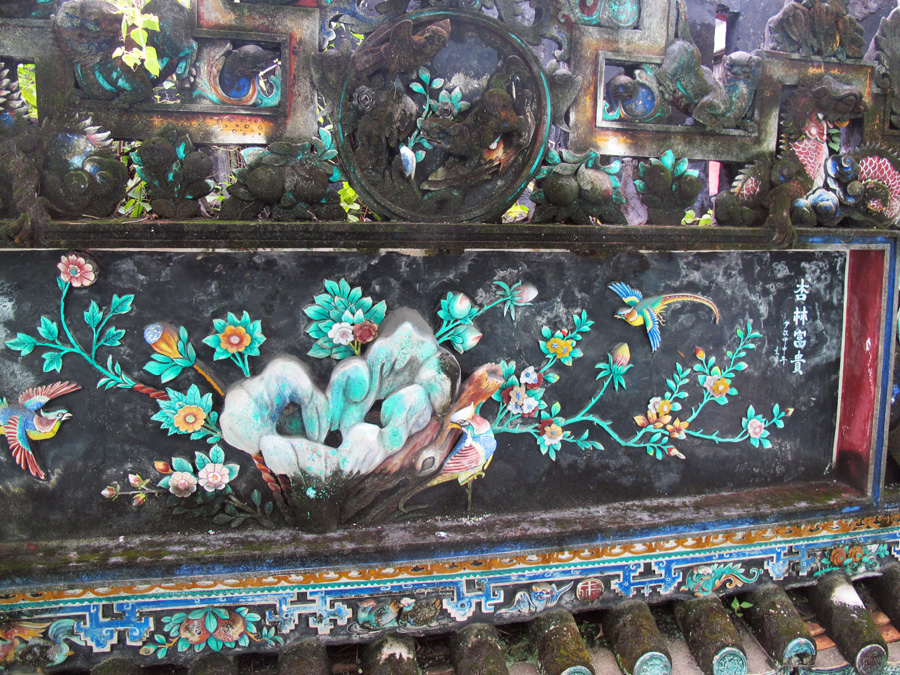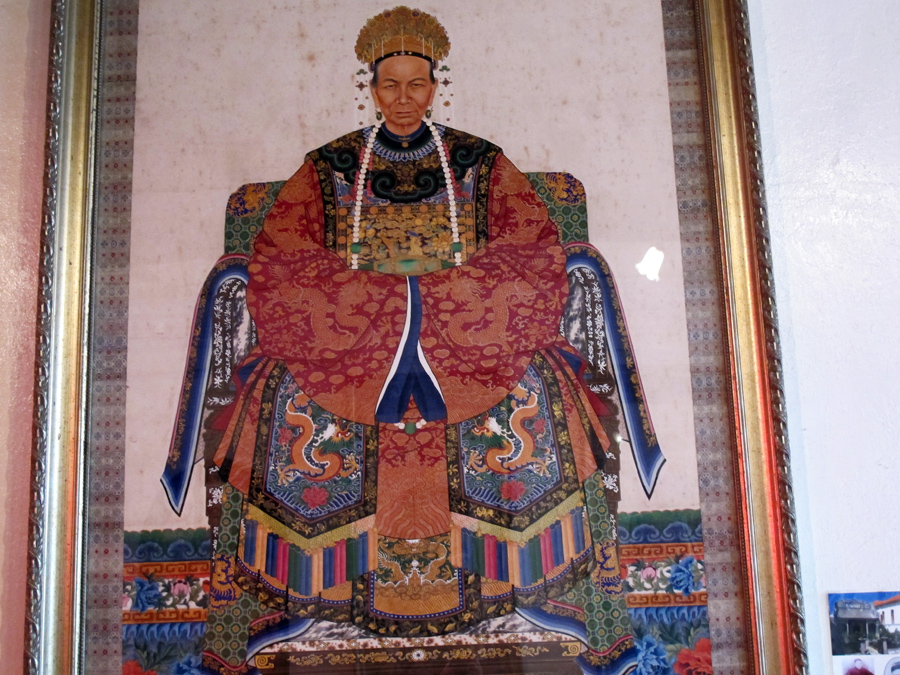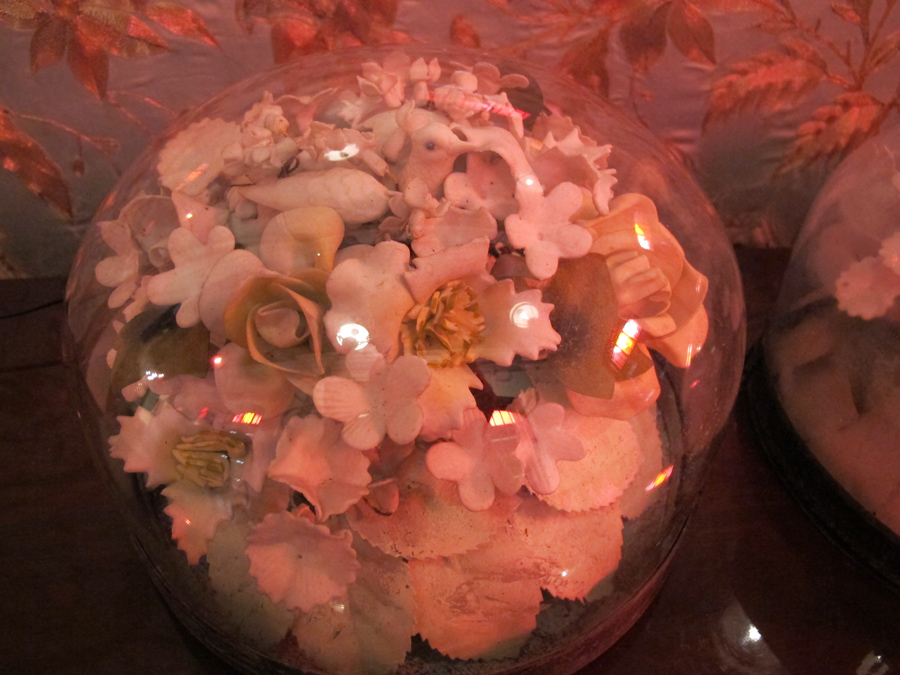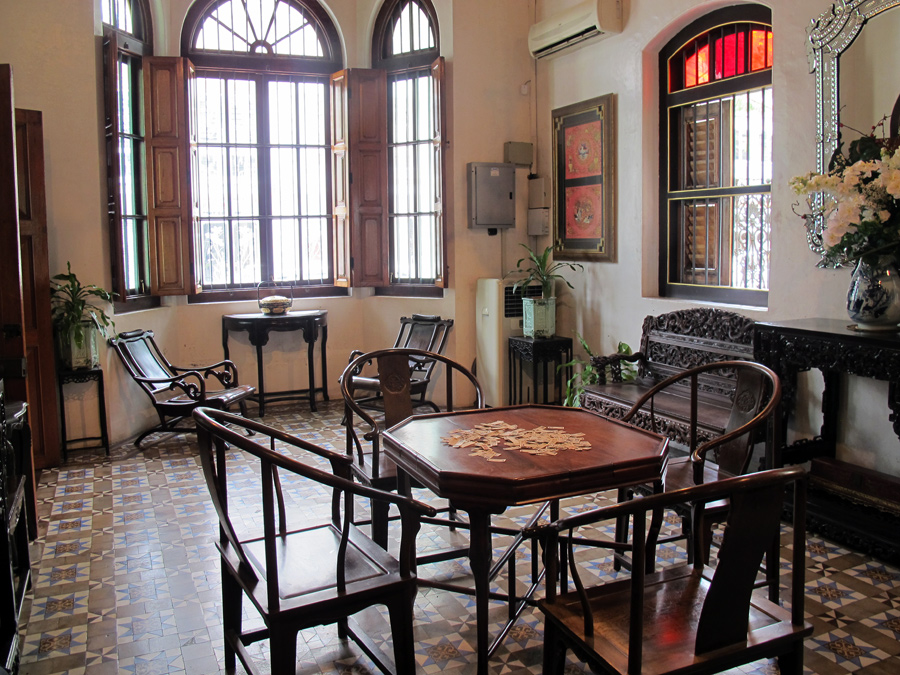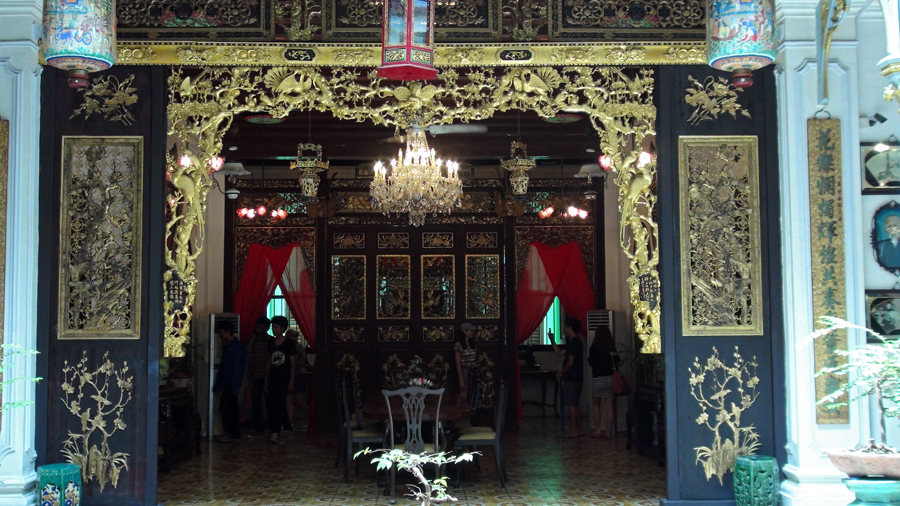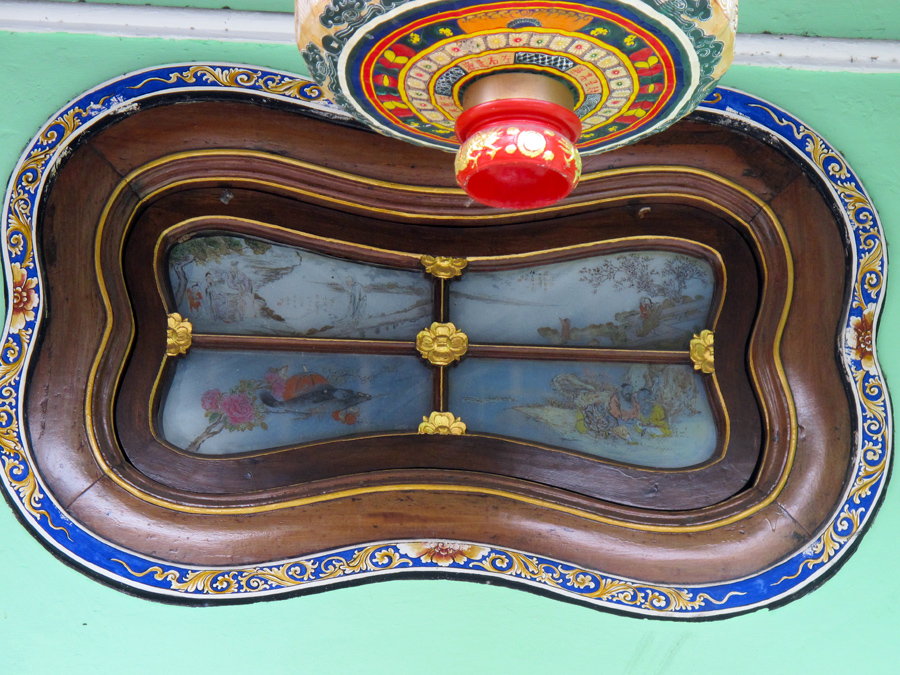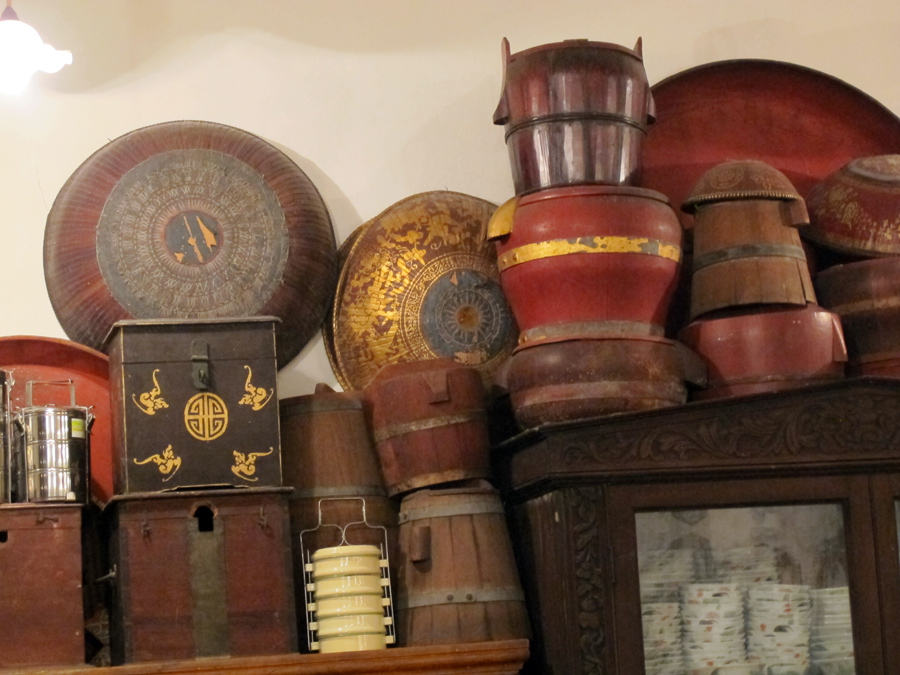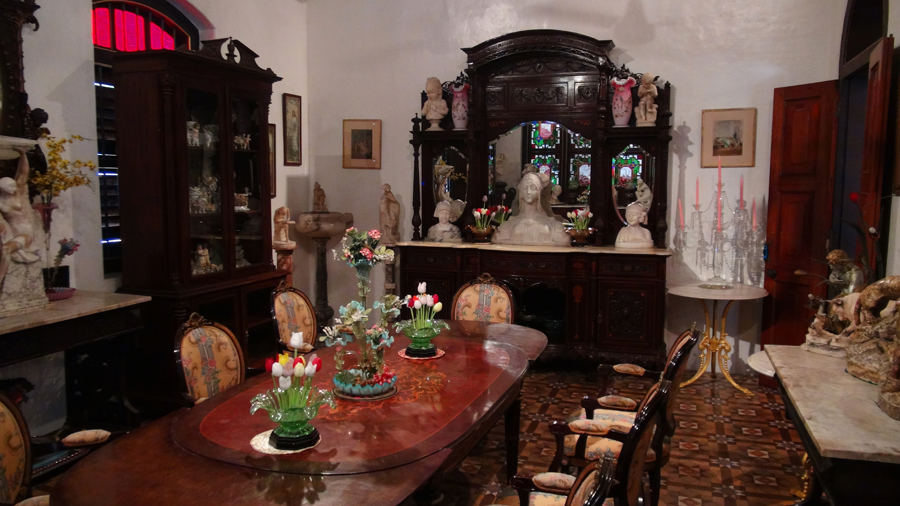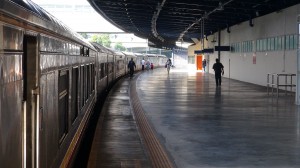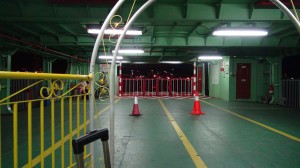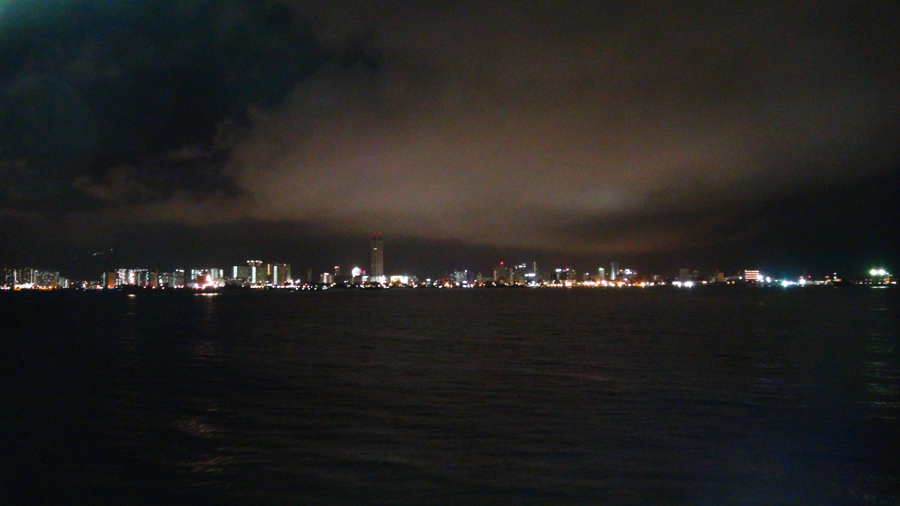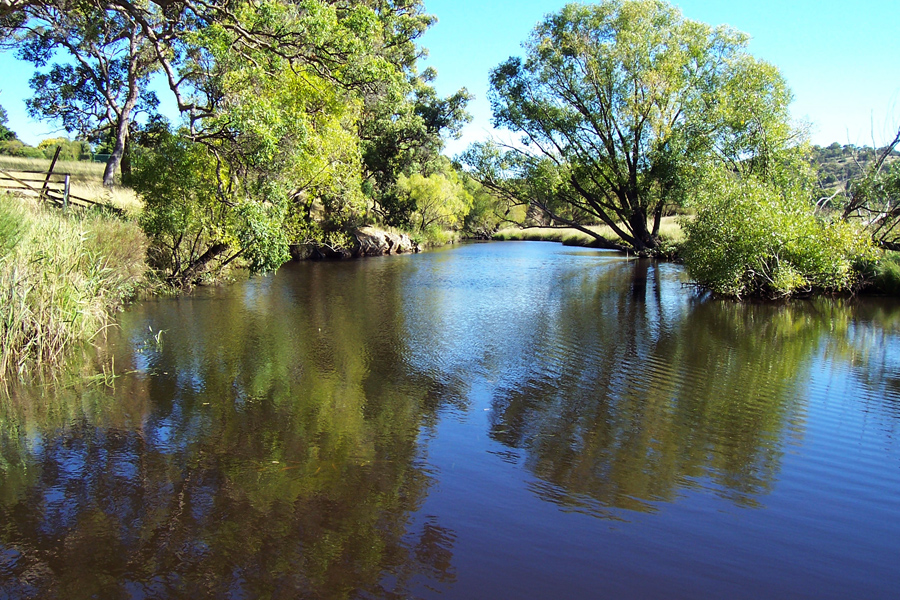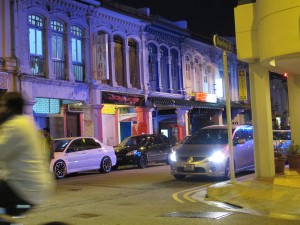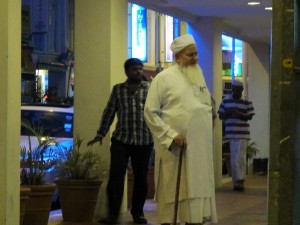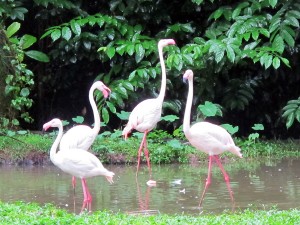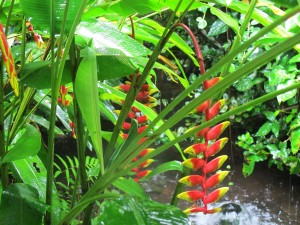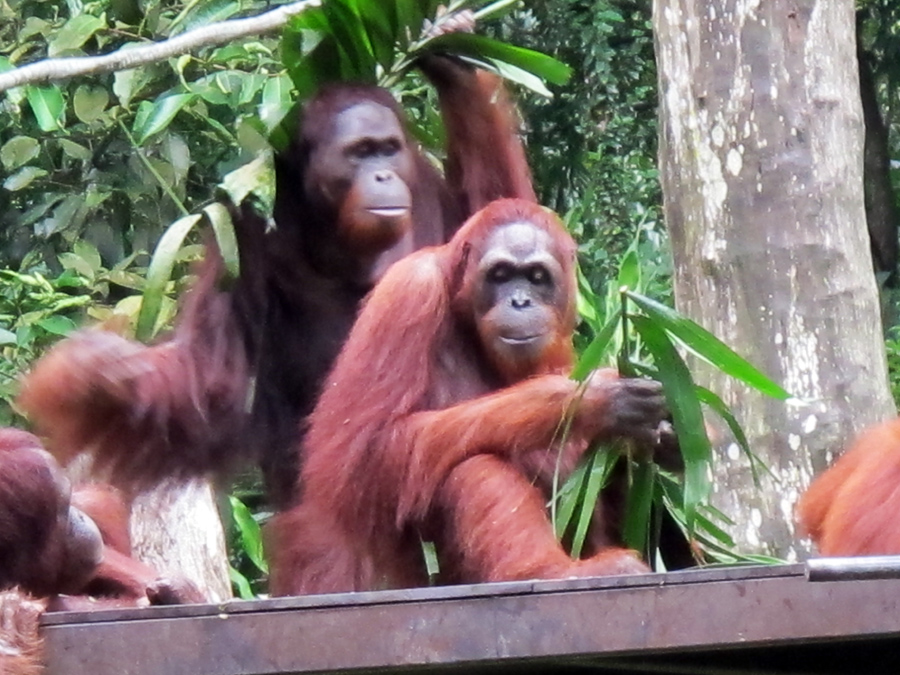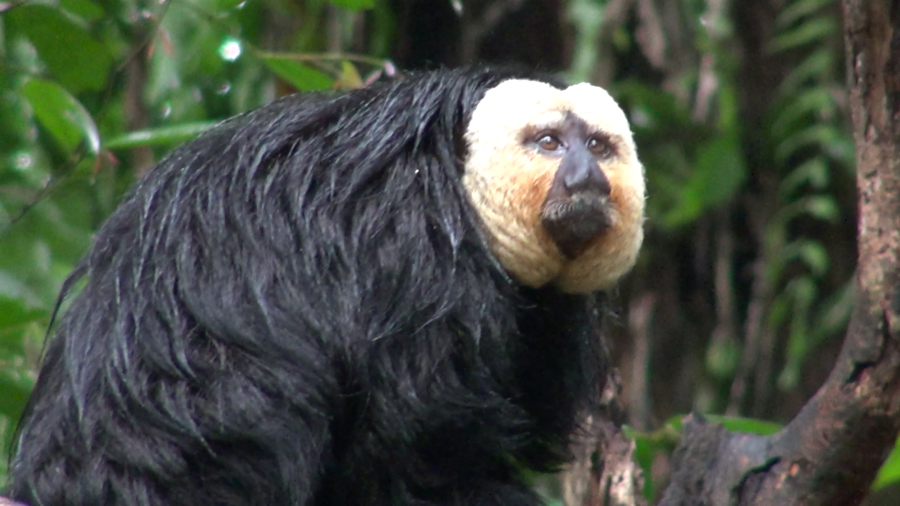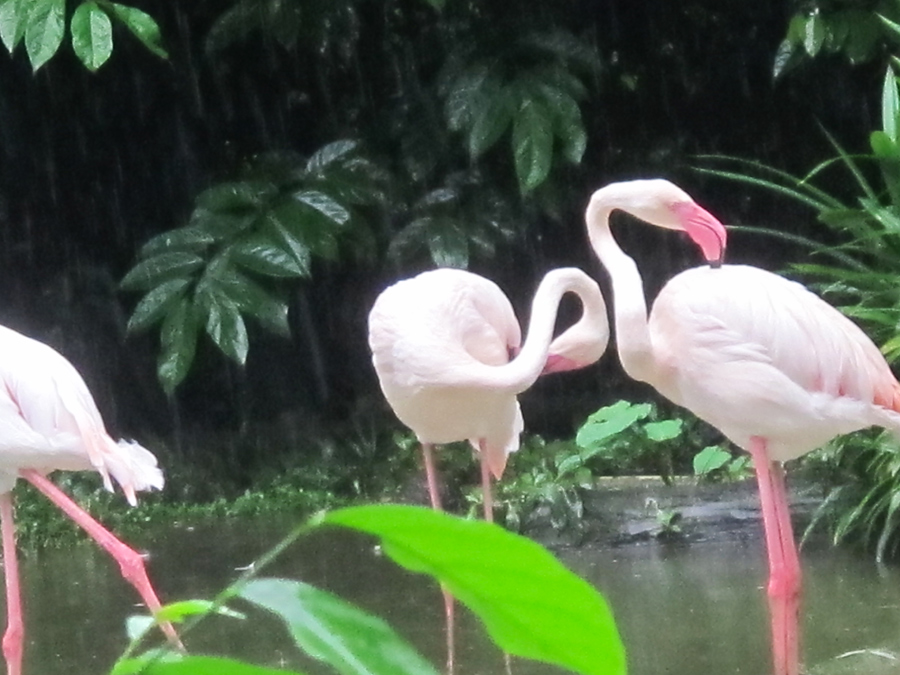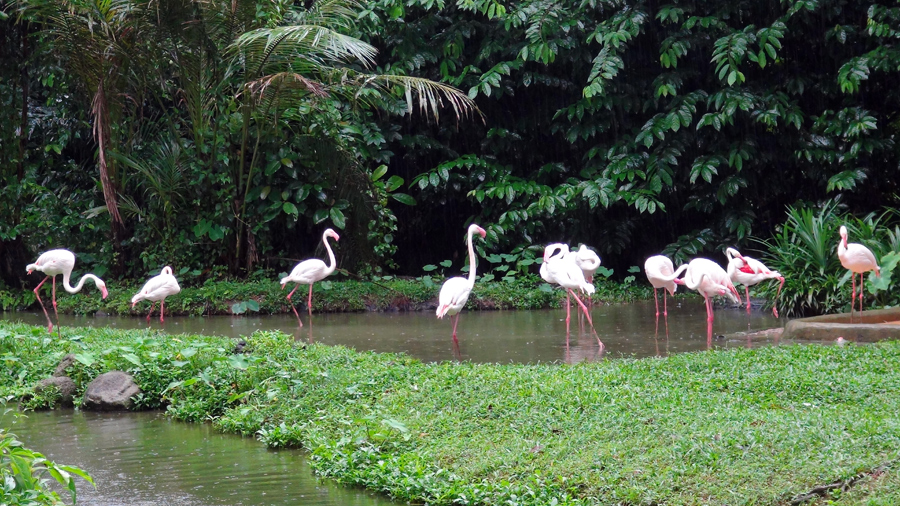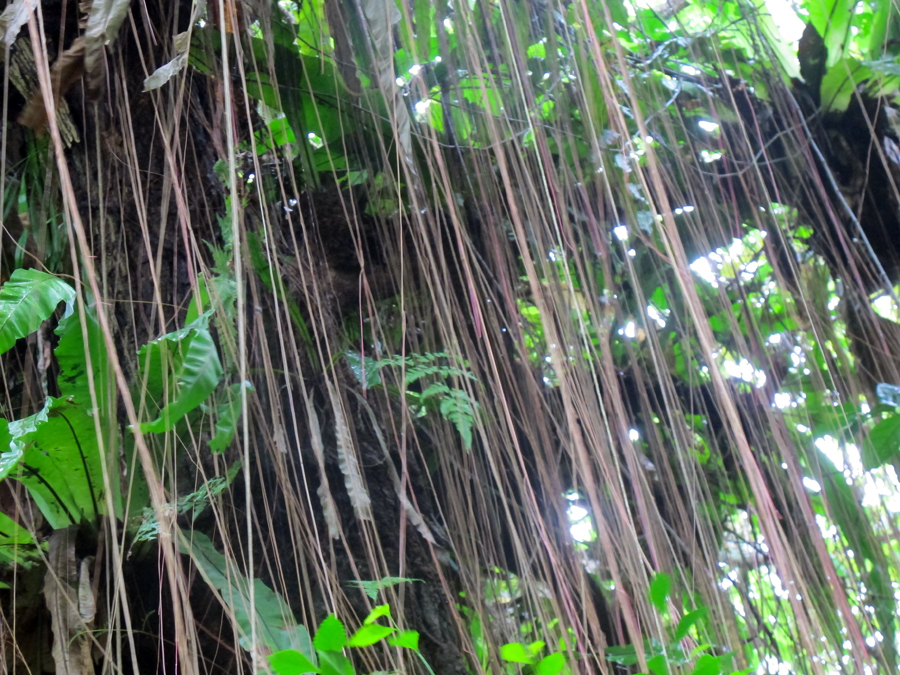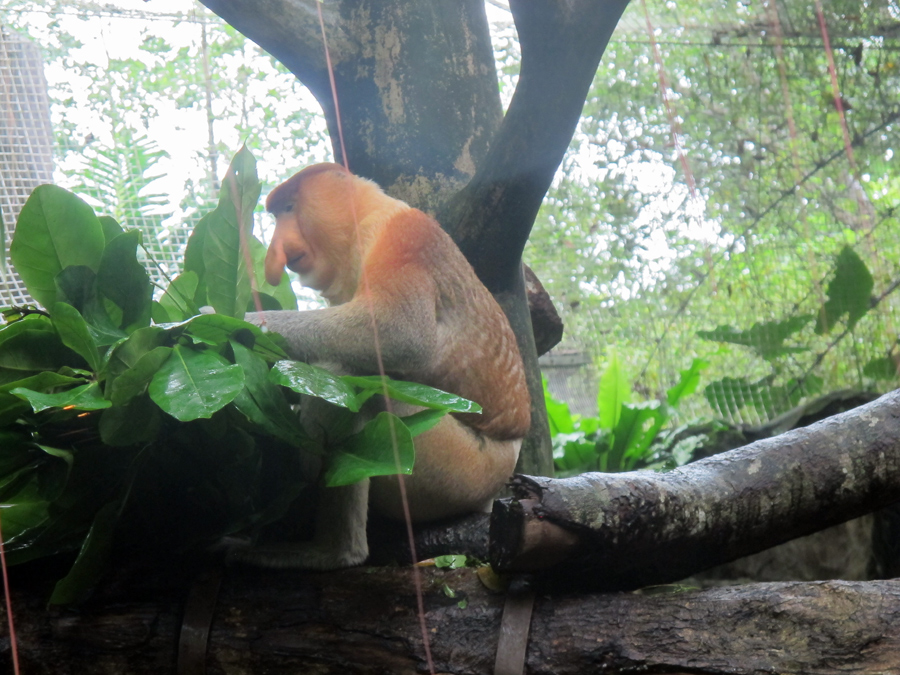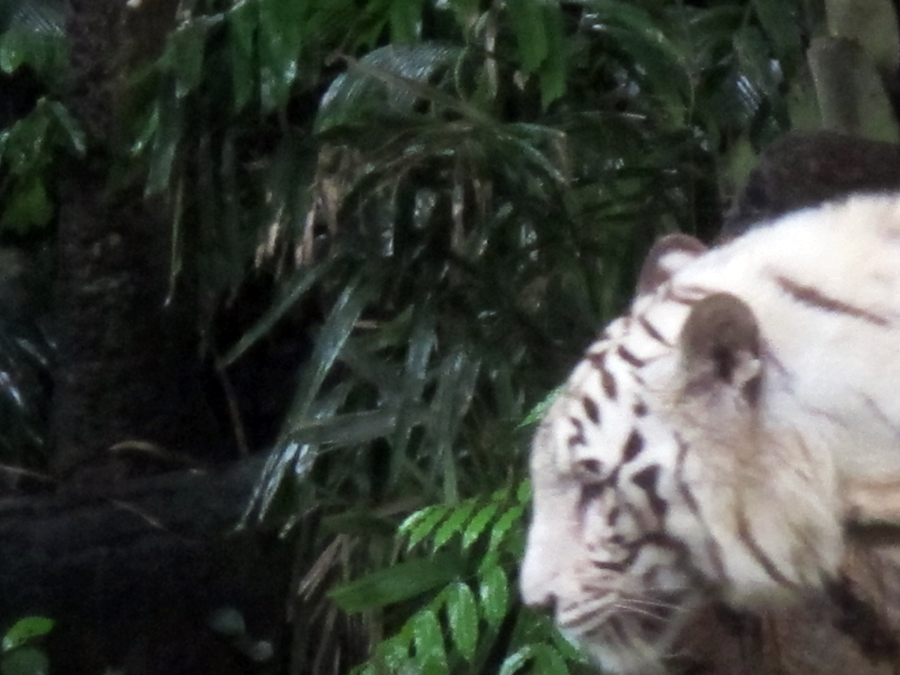Shahjahanabad is not the oldest part of Delhi, but is called that: “Old Delhi”. In this very congested, lively part of the city, we stay at the Tara Palace Hotel, its door opening (by a doorman) towards a laneway of clattering bicycle repair shops, a sheet-filled laundry, 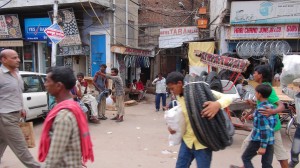 with a tailor and his sewing machine busy upon the platformed counter. At a neighbouring compound is a seated watchman who, I decide, is not drunk but has had a stroke, or some such misfortune. Boys come and go bearing loads of boxes or planks on their backs. Emerging to the “main” street itself, Esplanade Rd, we
with a tailor and his sewing machine busy upon the platformed counter. At a neighbouring compound is a seated watchman who, I decide, is not drunk but has had a stroke, or some such misfortune. Boys come and go bearing loads of boxes or planks on their backs. Emerging to the “main” street itself, Esplanade Rd, we 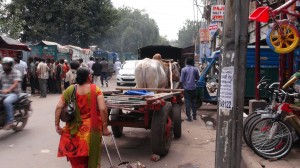 encounter bullock carts waiting to load or being roughly hammered to repair, the big, patient white beasts slapped towards their wooden yokes, or pushed hard to move so a van may squeeze past. Straining cycle rickshaw men haul the more fortunate passenger-humans towards Chandni Chowk. One day, a garbage truck shovels up a mountain of food waste, plastic, and anything else imaginable that is discarded, skirted by businesslike dogs making selections from this smelly mountain, their personal restaurant. In the mornings, it’s walkable – by mid afternoon noisy and hectic, by evening, it’s an effort to find a passage.
encounter bullock carts waiting to load or being roughly hammered to repair, the big, patient white beasts slapped towards their wooden yokes, or pushed hard to move so a van may squeeze past. Straining cycle rickshaw men haul the more fortunate passenger-humans towards Chandni Chowk. One day, a garbage truck shovels up a mountain of food waste, plastic, and anything else imaginable that is discarded, skirted by businesslike dogs making selections from this smelly mountain, their personal restaurant. In the mornings, it’s walkable – by mid afternoon noisy and hectic, by evening, it’s an effort to find a passage.
And it’s hot. We are armed with umbrellas, hats, coated with an uncomfortable thickness of sunscreen and mosquito repellent layered on any visible skin. There is currently a serious outbreak of dengue fever and people are dying, the numbers increasing by the day. It is unlikely to affect us, as it is the poorest areas which are not well fumigated, but we are taking no chances (apart from that of being here in Delhi at all).
Around the corner we are suddenly in 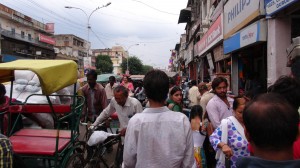 the full crush of Chandni Chowk (“Moonlight Square”), the main thoroughfare. This was once an elegant, tree lined boulevard, built by 17th century Mughal Emperor, Shah Jahan, and designed by his daughter, Jahanara. Its central canal is said to have reflected the moonlight, its bazaars to contain the finest silversmiths and perfumeries; the Emperor passed in procession along its length, from the Fatepuri Masjid at one end, to his citadel in the Red Fort (Lal Qila) at the other. After the Indian uprising of 1857 (known by the British as the mutiny), thousands of the inhabitants here were killed in reprisal. British forces razed the area, and filled in the canals. I was bemused to read that in the 1903 Delhi Durbar, led by Vice-regal couple Lord and Lady Curzon (seated on a most splendid elephant), they had the effrontery to process along this same avenue in honour of a new Emperor and Empress of India, King Edward VII and Queen Alexandra. It was a glittering occasion displaying great wealth, pomp and power. But the then-resplendent British Raj was soon to enter its final decades: already nationalist stirrings were afoot in India.
the full crush of Chandni Chowk (“Moonlight Square”), the main thoroughfare. This was once an elegant, tree lined boulevard, built by 17th century Mughal Emperor, Shah Jahan, and designed by his daughter, Jahanara. Its central canal is said to have reflected the moonlight, its bazaars to contain the finest silversmiths and perfumeries; the Emperor passed in procession along its length, from the Fatepuri Masjid at one end, to his citadel in the Red Fort (Lal Qila) at the other. After the Indian uprising of 1857 (known by the British as the mutiny), thousands of the inhabitants here were killed in reprisal. British forces razed the area, and filled in the canals. I was bemused to read that in the 1903 Delhi Durbar, led by Vice-regal couple Lord and Lady Curzon (seated on a most splendid elephant), they had the effrontery to process along this same avenue in honour of a new Emperor and Empress of India, King Edward VII and Queen Alexandra. It was a glittering occasion displaying great wealth, pomp and power. But the then-resplendent British Raj was soon to enter its final decades: already nationalist stirrings were afoot in India.
Where were we…oh yes, Chandni Chowk, 2013. Elephantless, Julie and Michael process with care over broken gutters and crammed footpaths, shaking heads at friendly but persistent offers of new handkerchiefs and pastel synthetic saris, of cheap shawls or deep fried foods. Just past the Sikh Gurdwara (scene of another historic slaughter), where handsome men in bright turbans sit in wide marble archways and pilgrims line up, barefoot, to enter, there is an intersection where we must cross to find the metro station. It takes sharp wits and focus to dart between the erratic traffic, and often I lose my resolve, becoming stranded on the narrow cement divider while Michael watches, amused, from the other side. Plunging across at a break, the next obstacle is the solid wall of cycle rickshaws lined up for custom so closely that it is difficult to slide between them to the safety of the footpath. At least, after seeing us pass several times, the ricksha-walas cease calling out distracting offers of rides to the spice market.
Past the homeless shelter, where women and children, old people, lie in sparse shade on traffic dividers and another garbage dump spills out on the street, obstructing foot progress, a market of fruit stalls leads towards a busy Hindu temple. The God over the entrance is riding a chariot drawn by an array of horses – I don’t think it’s Surya the Sun God though – must be one of the other 990 million or so versions of deity. Hanuman is there too, on the side roof. Could the charioteer be Rama? Krishna? That doesn’t seem right, somehow… there are stalls here selling flowers and tinselled offerings, and others where people queue for food, simple dahl and vegetable curry. There are men with nasty wounds, and very old women, with crippled hands, offering the cheapest of trinkets, seated on the ground in rainstorms and heat. Further down, towards a small park, is the family of lively child beggars, one small boy holding a baby that is suspiciously fast asleep. I never can ignore the elderly most of all, but stopping only rarely, we tread past all these struggling souls, as do the hordes of other pedestrians heading to and from the metro. The questioning of inequality, and the inability to find an answer, is a constant, visceral event, here.
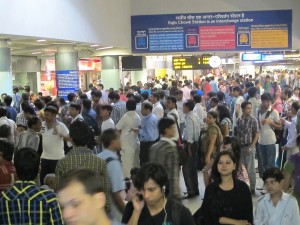 On this day, we catch the metro first to Rajiv Chowk in central New Delhi, then change to the South Delhi line, on our way to Qutb Minar. I cannot imagine how Delhi managed without the Metro, which is still quite new, still under extension, and very crowded indeed. So crowded, that the alarming news is that one platform at Noida City Centre has sagged under the weight of commuters. We strap-hang in the crush, but are offered seats due to our advanced age, or perhaps our “foreigner” status, which attracts much attention. One man leans in to me and states “ You like India? Indians are very loving people!” Having just that morning at breakfast been reading the horrors of recent communal slaughter at the nearby city of Muzaffarnagar, I still nod politely.
On this day, we catch the metro first to Rajiv Chowk in central New Delhi, then change to the South Delhi line, on our way to Qutb Minar. I cannot imagine how Delhi managed without the Metro, which is still quite new, still under extension, and very crowded indeed. So crowded, that the alarming news is that one platform at Noida City Centre has sagged under the weight of commuters. We strap-hang in the crush, but are offered seats due to our advanced age, or perhaps our “foreigner” status, which attracts much attention. One man leans in to me and states “ You like India? Indians are very loving people!” Having just that morning at breakfast been reading the horrors of recent communal slaughter at the nearby city of Muzaffarnagar, I still nod politely.
But this theme of “loving Indian people” is to be repeated, later, in a conversation I have with a dashing doctor acquaintance in Landour. He tries to say, while speaking disapprovingly of the vindictive triumphal burning of the demon king Ravana in recent Ramlila celebrations, that for Indians such hate does not preclude having a loving nature; I explain in response that westerners also love their families and friends. The implication I sense quite often in such conversation is that westerners do not know about being loving. After all, we put our old people in nursing homes (yes, and they leave theirs to beg on the ghats of Varanasi, or places worse). Still, there is an emotional warmth in Indian people generally, that is reflected in their films, their devotional practices, their song, their vibrant colours, a general willingness to be joyous. “Be open to the moment” Dr (Major) Abhinav says to me, and it works, as we swing down Landour Bazaar and I become less shy, more happy, taking his advice.
Meanwhile, back on the metro, we disembark at the station for Qubt Minar. This area is in the more sparse environs of South Delhi, which more truly is the site of “Old Delhi”, or several versions of it. For at least six ancient kingdoms underlie, still visibly, the Delhi of our time: New Delhi, built by the British in the 20th century, is said to be the seventh city. Now, as we walk to the road to find an autorickshaw, a bird sings in a small tree, bringing me sharply alive to the moment. I’m here, I’m here now, I feel the air, see the red of the flowers. What would the world be, without the poetry of birds?
It’s very hot. Soon, autorickshaw paid and 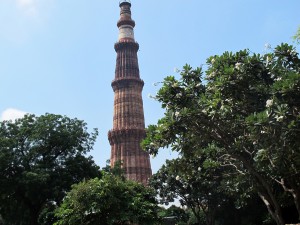 gone, the sun beats down on us in the green, tree filled grounds and burning surfaces of the Qubt Minar complex; we’re drawn ahead by the soaring pillar of inscribed stone that is this ancient minaret of the Delhi Sultanate dynasty, circa 1200 CE. Some chattery schoolgirls from Tamil Nadu rush up in excitement – they have come all this way on a school excursion, to see a famous national monument. They run ahead, and we all arrive at the remains of the first mosque ever built in India. Its huge arched entrances remain, and a gallery of carved pillars, clearly taken from a Hindu temple; it is really sad to see that the faces have been hacked away from all the apsara figures flying on the pillar tops.
gone, the sun beats down on us in the green, tree filled grounds and burning surfaces of the Qubt Minar complex; we’re drawn ahead by the soaring pillar of inscribed stone that is this ancient minaret of the Delhi Sultanate dynasty, circa 1200 CE. Some chattery schoolgirls from Tamil Nadu rush up in excitement – they have come all this way on a school excursion, to see a famous national monument. They run ahead, and we all arrive at the remains of the first mosque ever built in India. Its huge arched entrances remain, and a gallery of carved pillars, clearly taken from a Hindu temple; it is really sad to see that the faces have been hacked away from all the apsara figures flying on the pillar tops.
Dwarfed by the enormous arches, yet elegant and mysterious in the centre of the main courtyard, stands the sixteen centuries old Iron Pillar, a wonder which never rusts. There is much of historical interest in this complex, and in the adjoining Mehrauli Archaeological Park – if you can find it.
The entrance to the Archaeological Park is along a nondescript, unmarked, dirt side road, which we enter twice, unsurely, before pressing ahead through a gate into a field, and a path that leads through a garbage dump. Beyond some trees we glimpse a domed tomb – though that is no uncommon sight in North India. Wary of snakes, we press on until the 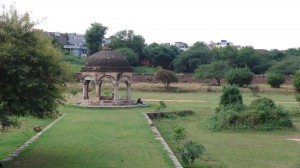 path opens out to reveal a treed, shrubby, wide acreage of many scattered monuments, and spread about, a band of workers cutting grass with scythes or resting in shady pavilions. We climb the weed embedded, cracked steps of a nearby tomb, which inside is cool, light, with exquisite blue and white patterned tiles lining the dome. It is always an indication of the immense richness of India’s past that, so often, ancient treasures are almost totally unnoticed and uncared for. Yet this natural aging, for me, allows a ghost from the past; the softening effect of crumbling edges, the lack of signposts and ticket keepers allows a more personal channel of connection. This is not always my feeling – I am very sad to see beautiful old houses fall to decay. And stone lasts much, much longer.
path opens out to reveal a treed, shrubby, wide acreage of many scattered monuments, and spread about, a band of workers cutting grass with scythes or resting in shady pavilions. We climb the weed embedded, cracked steps of a nearby tomb, which inside is cool, light, with exquisite blue and white patterned tiles lining the dome. It is always an indication of the immense richness of India’s past that, so often, ancient treasures are almost totally unnoticed and uncared for. Yet this natural aging, for me, allows a ghost from the past; the softening effect of crumbling edges, the lack of signposts and ticket keepers allows a more personal channel of connection. This is not always my feeling – I am very sad to see beautiful old houses fall to decay. And stone lasts much, much longer.
From here, the Qubt Minar rises into the blue, beyond a bank of trees; a toy sized airliner flies past its tip. The international airport is nearby. Below our blue tiled tomb the land falls to a shady water course and, I had read, to a step well, which we would have loved to find, if not for the very steep and mossy decline. By now we are tired too, from walking in the sun, and numbed by the presence of monuments. We decide to find just one more destination in South Delhi, on our way back to the station. But that is to prove easier said than done, and Haus Khas to be a quite strange, yet oddly revealing, destination.
